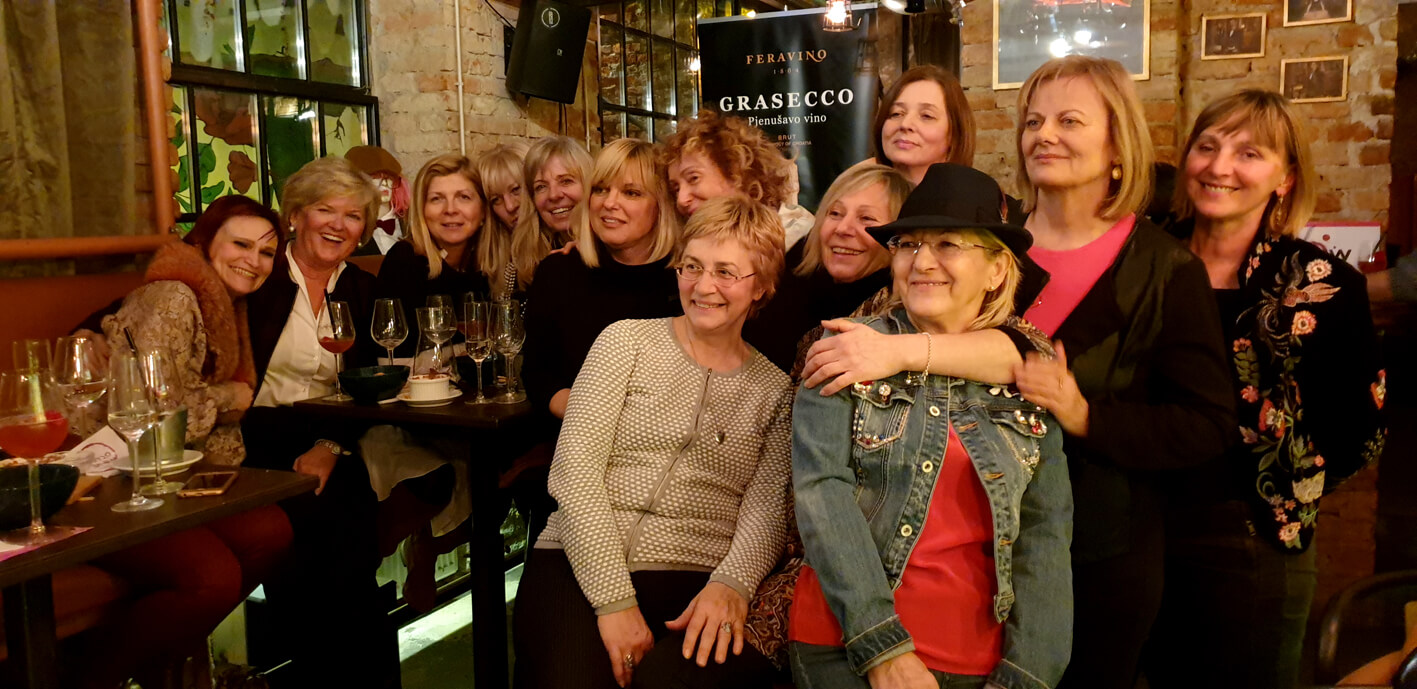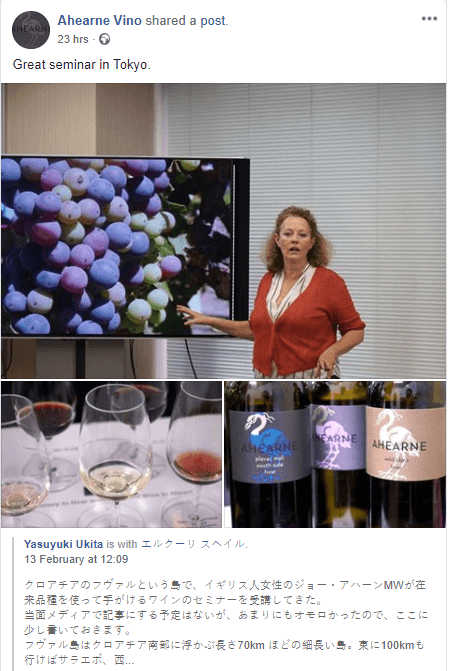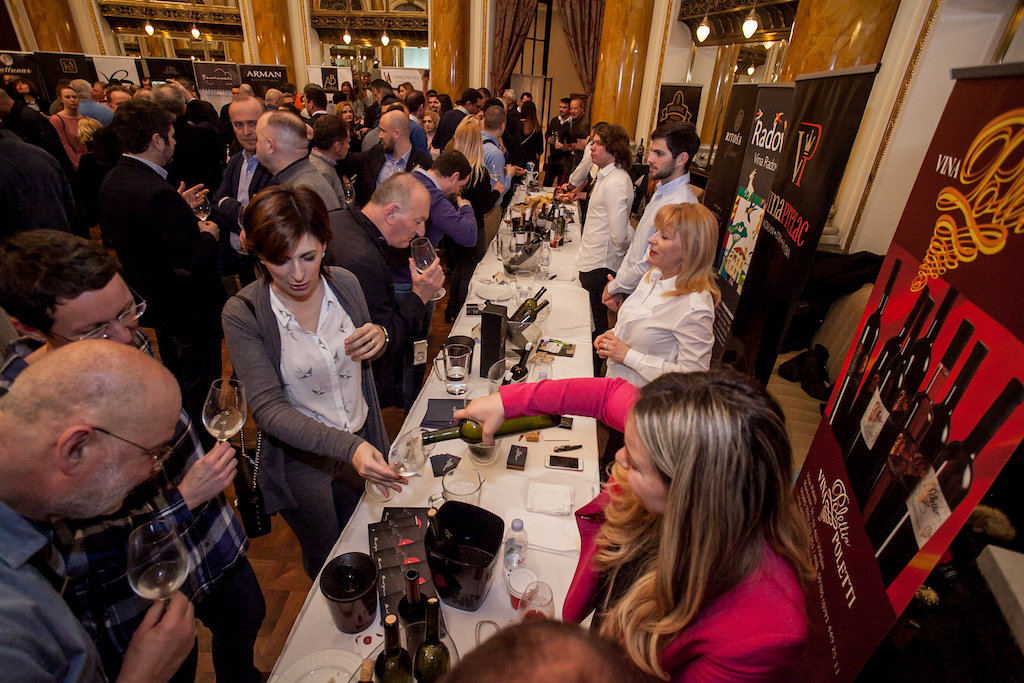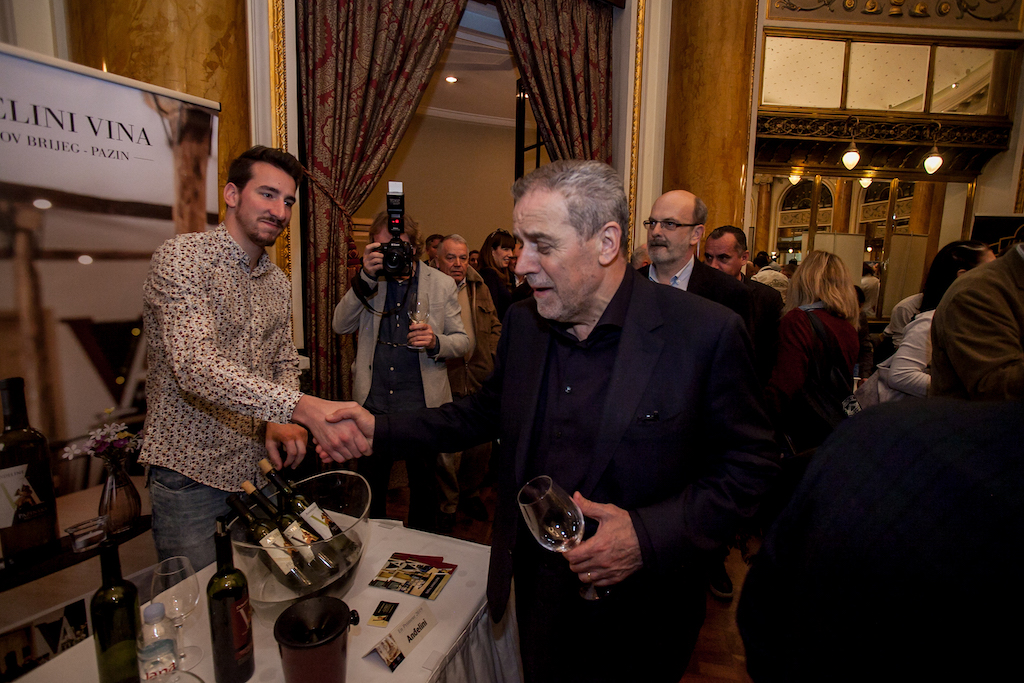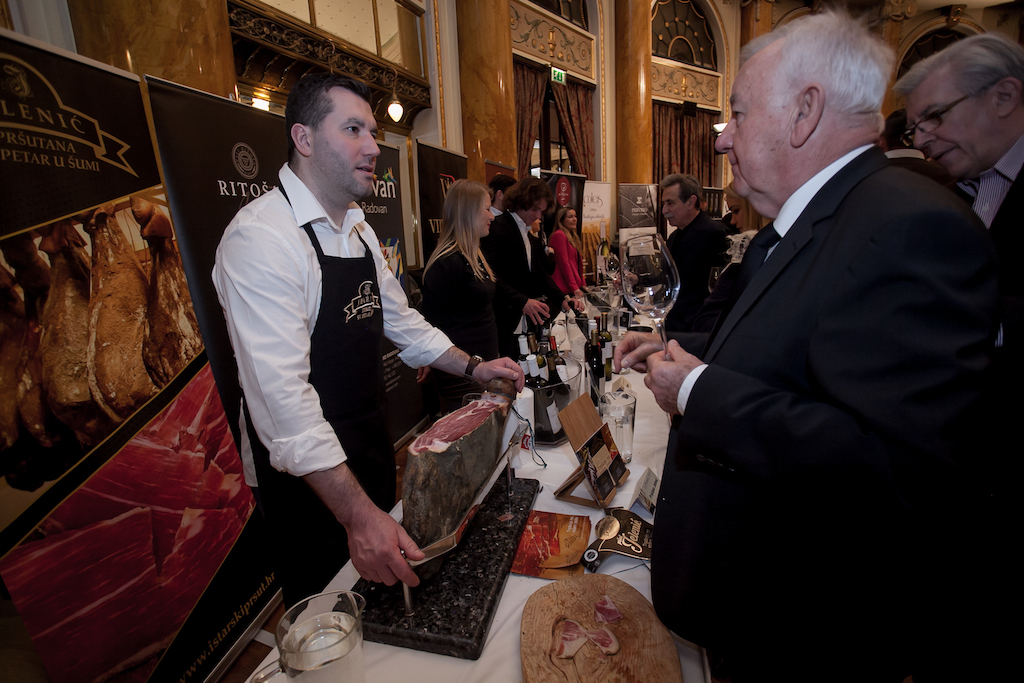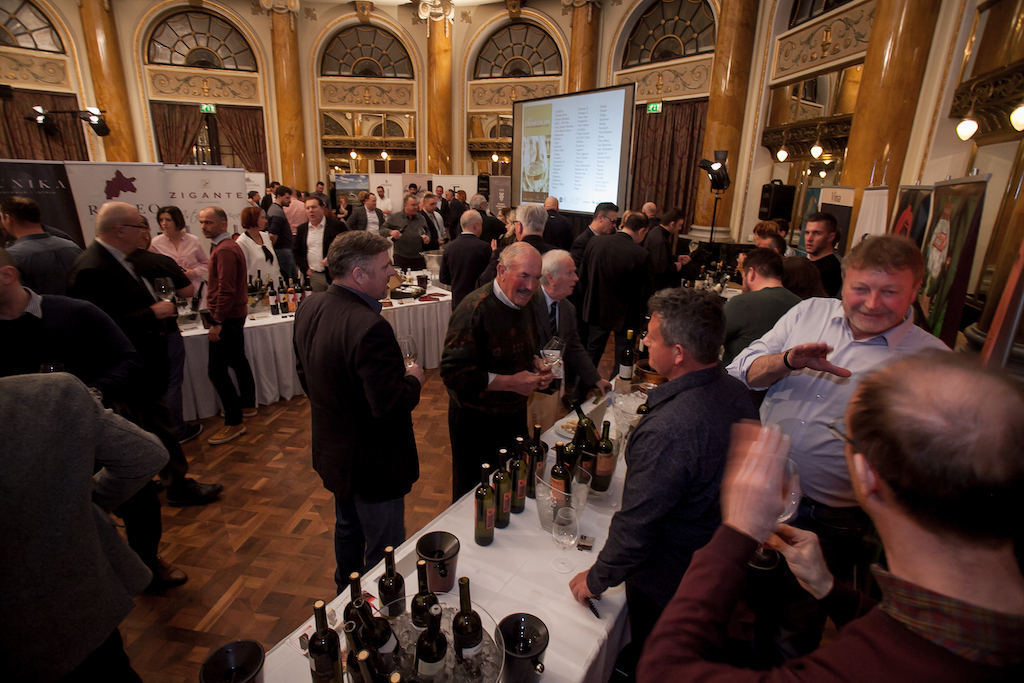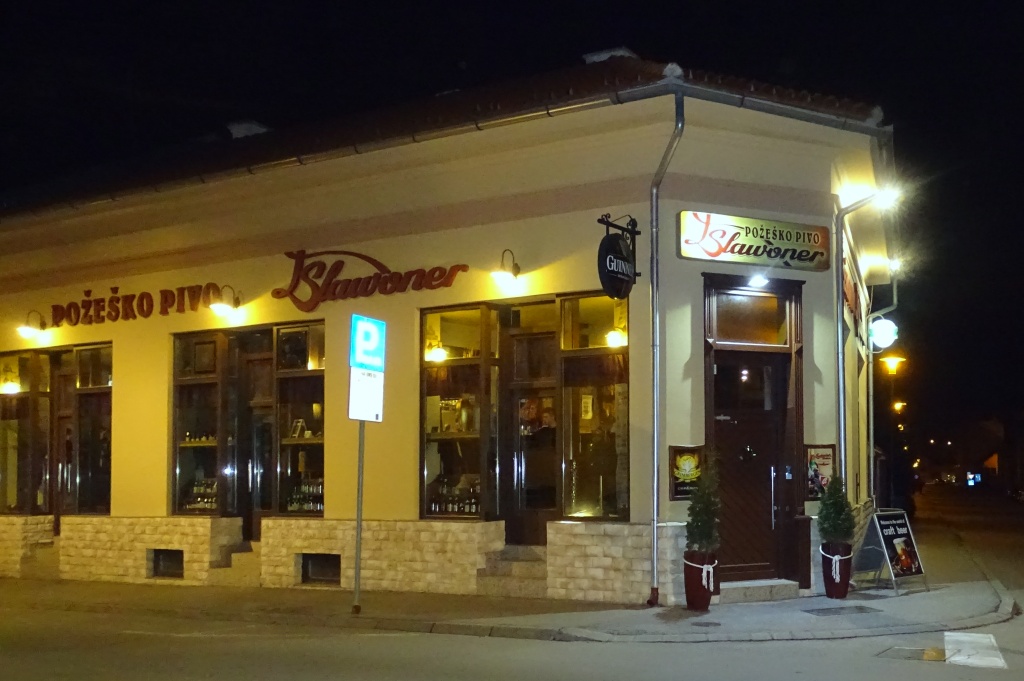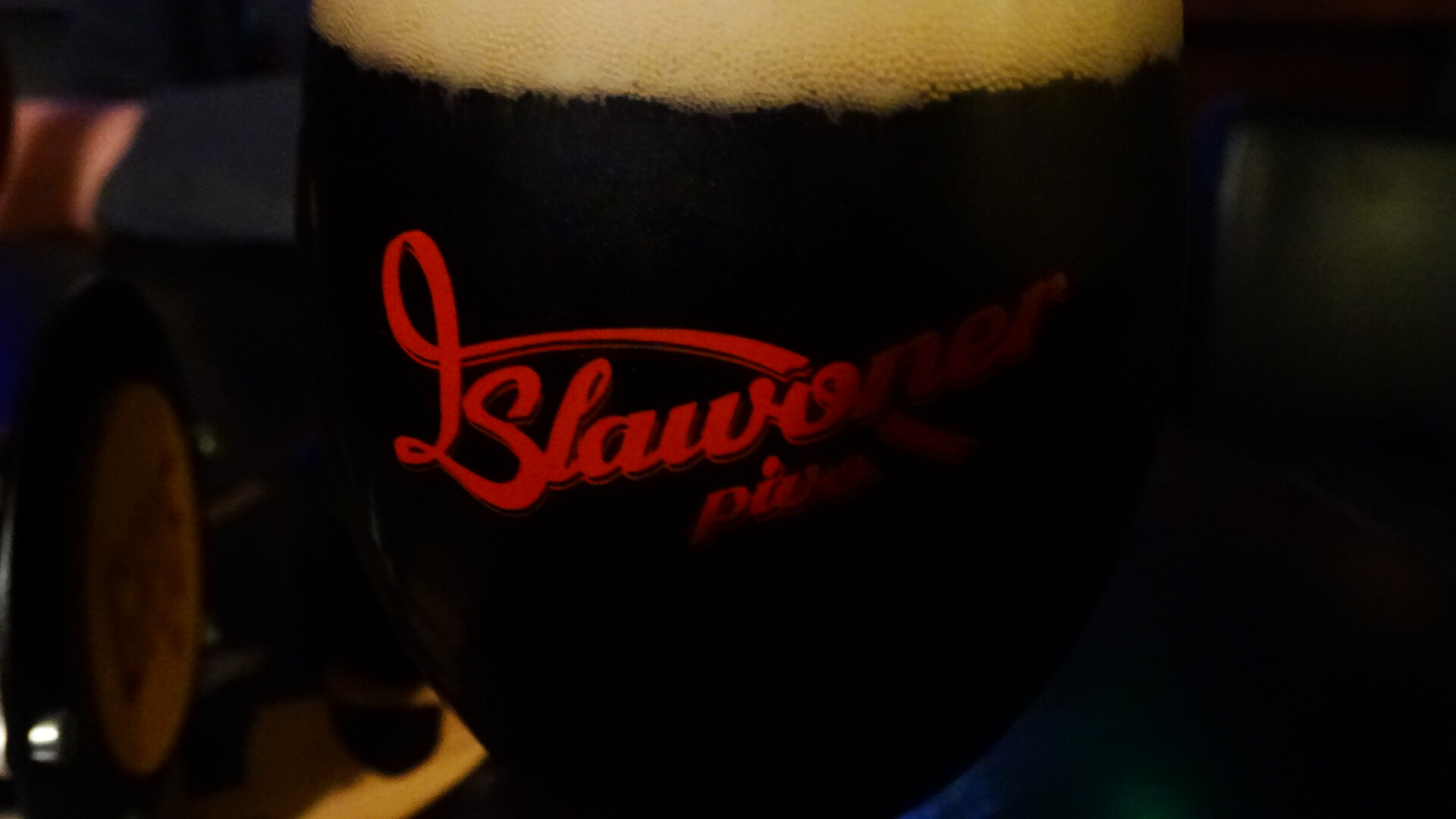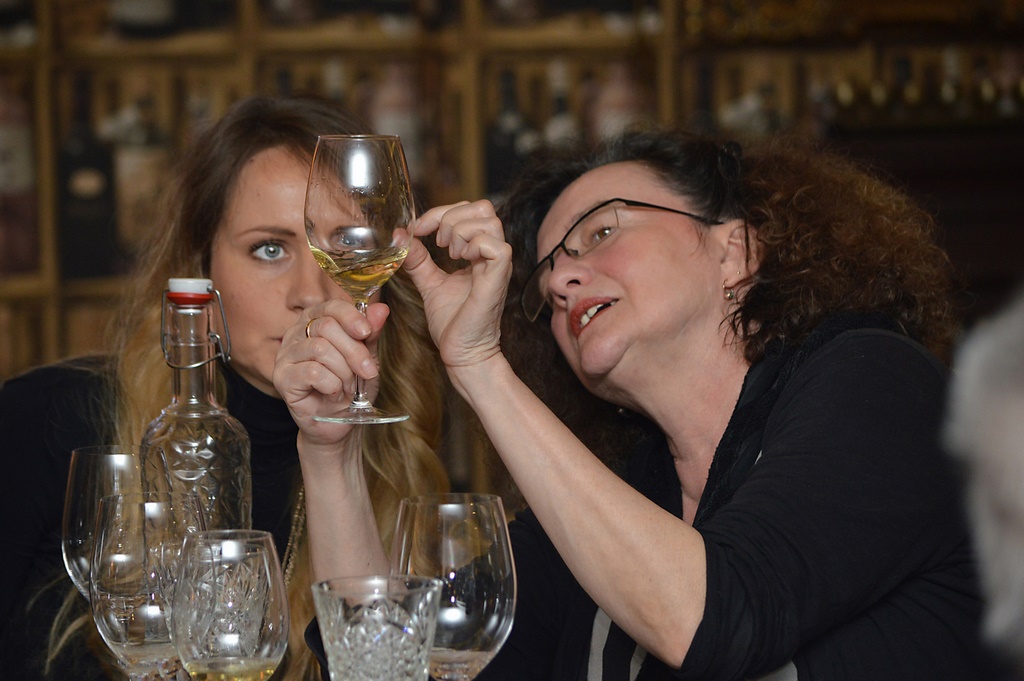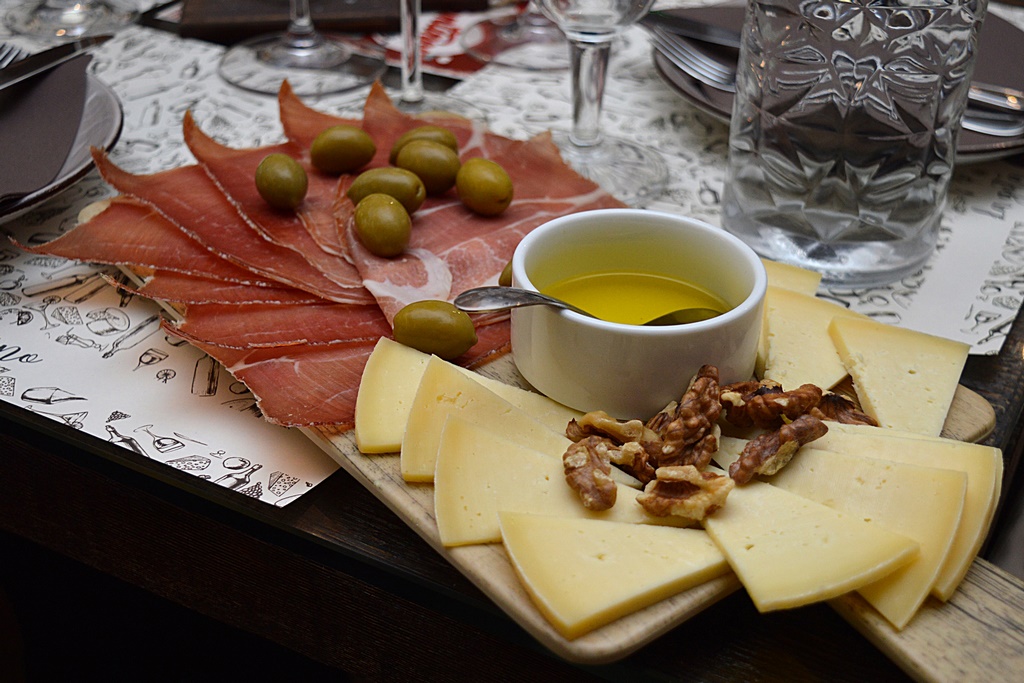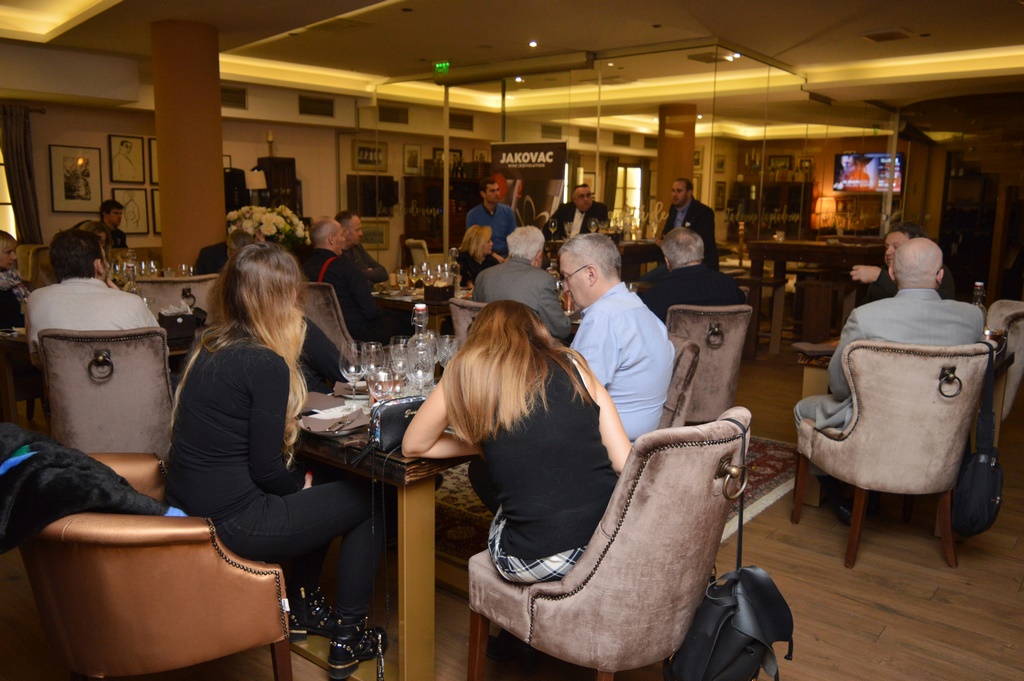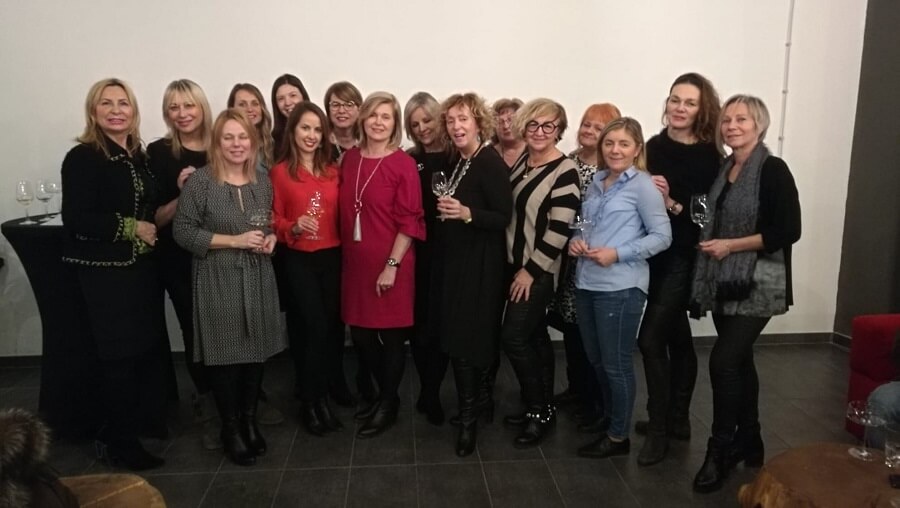Final Draft of New Law on Wine Forwarded to Parliament
ZAGREB, February 21, 2019 - The Croatian government on Thursday forwarded to the parliament the final law on wine, which proposes reducing the tax burden on winemakers.
Agriculture Minister Tomislav Tolušić said the bill was formulated in cooperation with winemakers and wine growers.
"We have done our best to ease their market position, to make Croatia recognisable as a region that may not have many vineyards compared to other European regions but that has high quality wines and is becoming recognisable for them not only in Europe but around the world as well," said Tolušić.
He said that winemakers had complained about parafiscal levies in wine production, with the state charging them around 2 million kuna annually for registration labels and about ten million for documents necessary to put wine on the market.
"The bill abolishes those parafiscal levies and what has been retained is the LOT number which is sufficient to follow wine from production to sale," he said.
He added that the bill envisaged introducing wine supervisors to step up control of wine production from vineyard to wine cellar with the aim of making the situation on the market more orderly and fighting the grey economy.
The bill also introduces four wine-making regions - Slavonia and the Croatian Danube region, the Croatian Istria and Kvarner, Dalmatia, and the central and hilly Croatia.
The government today also adopted a set of legislative changes regulating the establishment of the State Inspectorate, which as of April 1 should take over the job of inspection currently done by several ministries.
More news on Croatian wines can be found in the Lifestyle section.
Wine and Food Festival WineRi Coming to Rijeka
“Trs Is Ours” – a pun on the historical slogan about Trieste (a city in the northern Italy) is the slogan of the 3rd International Wine and Food Festival WineRi 2019, to be held on March 8-9, from 1 pm to 7 pm at the Maritime and Historical Museum of the Croatian Littoral in Rijeka (Governor's Palace, Museum Square 1).
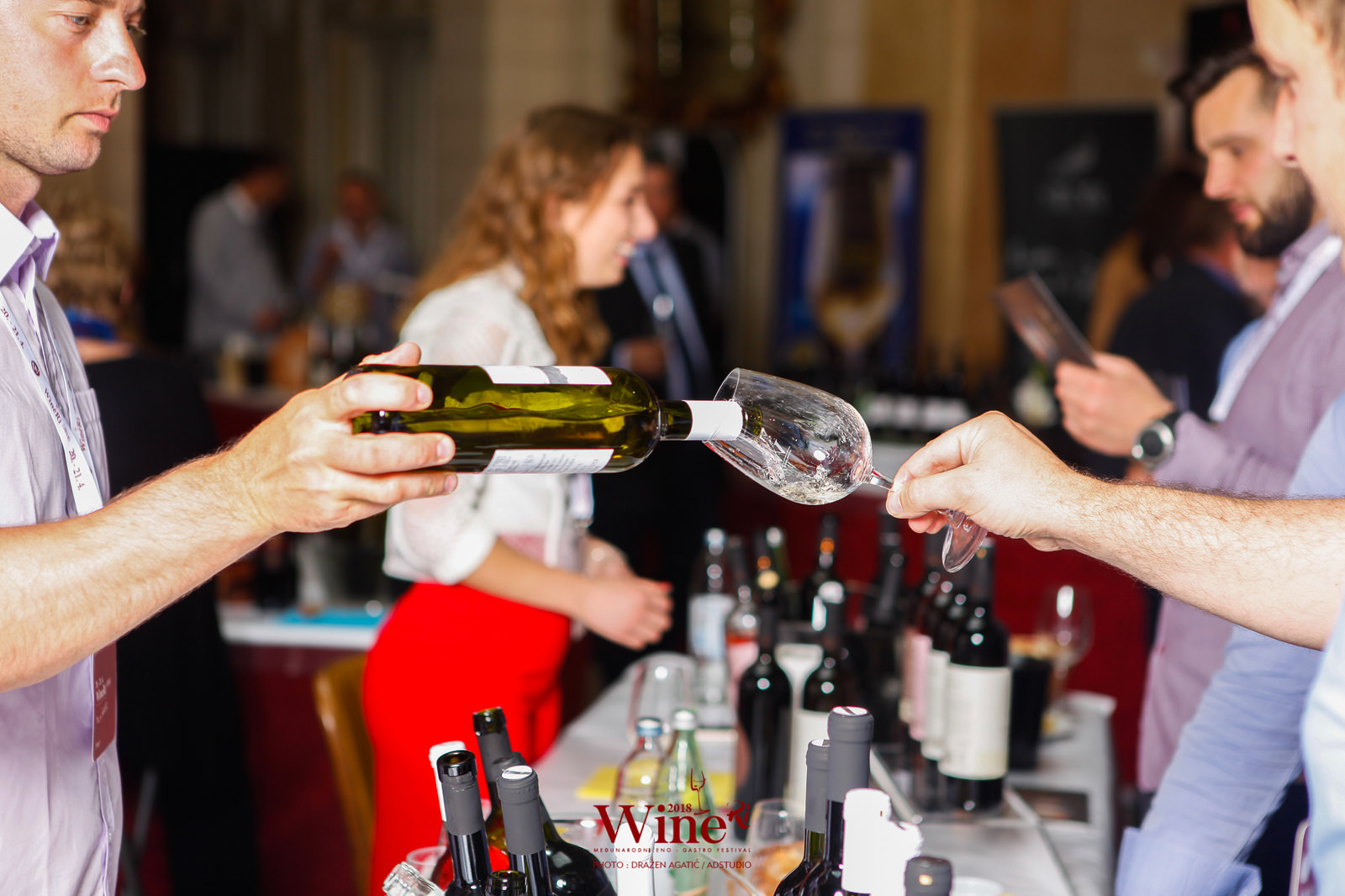
WineRi is the venue for the promotion of indigenous Kvarner wine varieties and a kind of En Primeur for Žlahtina, Jarbola and Kastafska Belica. In total, 67 exhibitors will be present with over 250 wine labels from Croatia, Macedonia, Serbia and Slovenia, while 18 exhibitors will present Primorje-Gorski Kotar County. The exhibitors, in addition to 50 winemakers, will feature six producers of brandies and liqueurs, six food producers (cheeses, olive oils and cured meat products), two manufacturers of wood and recycled paper products, two craft beer producers and one chocolate producer.
The festival ticket costs 60 kuna, while the glass deposit is 20 kuna. Due to limited space, all workshops will also cost 60 kuna. The festival traditionally has a charity character, and all exhibitors will donate their products which visitors will be able to buy for donated 50 kuna, with the proceeds going to “I Want – I Can” association from Pazin, which works with children with special needs.
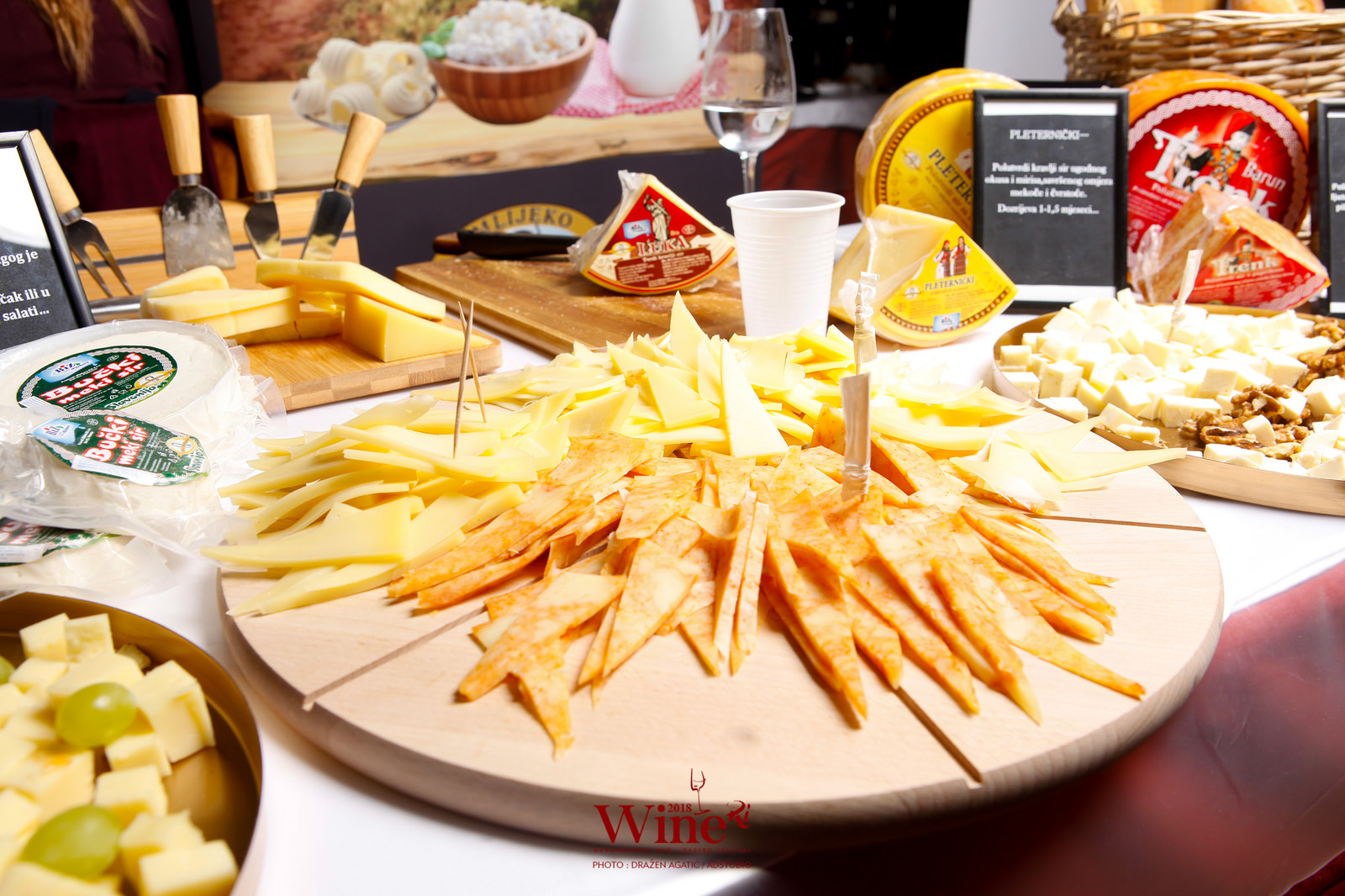
As part of the festival, eight professional workshops will be held, and UNESCO-protected Zvončari and Bakarski Baškot groups will be presented. The workshops Making Love with Wine, Jarbola? Belica? What Is That, Rose Wines of Istria and Kvarner powered by Pink Day, Wine and Cinema, Sparkling Kvarner, Wine’s Indiana Jones, will surely attract numerous participants, since they will be hosted by experienced experts and sommeliers Filip Savić, Tomislav Pavlešić, Darko Lugarić, Jelena Bulum from WOW association, Marija Vukelić and the winemaker Ivica Dobrinčić. Part of the organisational team is the PAR Business School with its student practice department, the PAR Incubator.
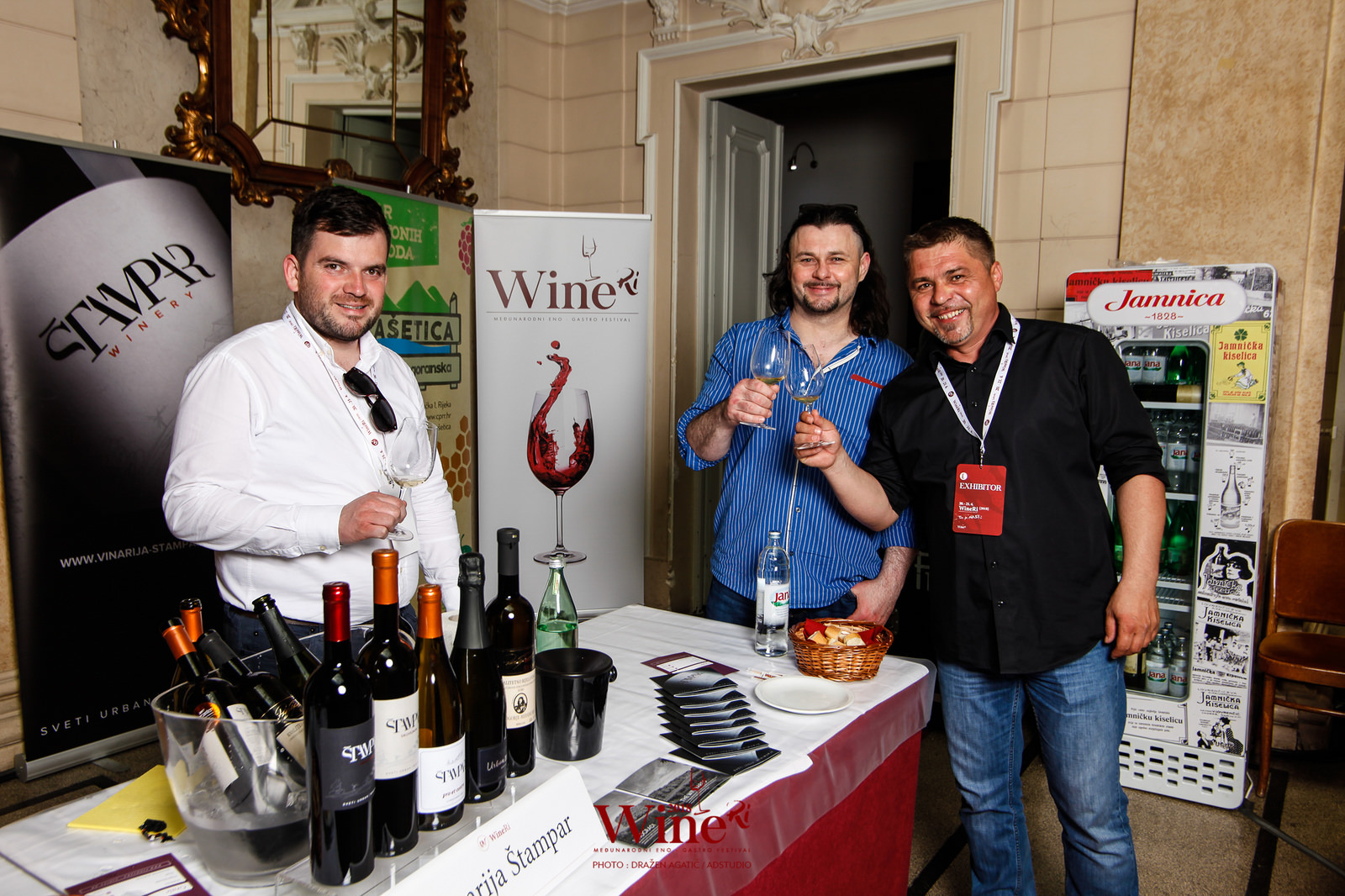
Two parties will also take place. On Friday, March 8th, on the International Women's Day, the WTF (Wine Tasting Festival) party will be held at Marina Botel, while on Saturday, 9 March, starting from 8 pm the central WTF party will be held at Bačva club. The organisers believe that this year the number of visitors will surpass last year's and that the festival will become a meeting point and a gathering of producers on the one hand, and wine fans and representatives of the catering industry on the other, a kind of an ode to the often-mentioned Mediterranean lifestyle.
The partners of this year's WineRi festival are Vino s okusom soli Crikvenica, Vino.com Zagreb, Salon pjenušavih vina Zagreb, Pink Day Zagreb powered by WOW, WineOs Osijek, Kvarner Wine Fest Opatija, Zadar Wine Festival and Grand Tasting Belgrade. The associations supporting the festival are the Žlahtina Association, the Belica Association, the Jarbola Association, the WOW/Women on Wine Association, and the AHA association. The organiser of the festival is the marketing agency Aha Marketing from Selce, while co-organisers are the Centre for hilly and mountainous agriculture of Primorje-Gorski Kotar County, i.e. Kašetica Primorsko-goranska – the Centre of autochthonous products of Primorje-Gorski Kotar County.
The wine godfather of the festival is a participant of the Croatian MasterChef competition finals Časlav Matijević. The festival is held under the auspices of President of the Republic of Croatia Kolinda Grabar Kitarović, Deputy Prime Minister and Minister of Agriculture Tomislav Tolušić, Minister of Tourism Gari Cappelli and Minister of Economy, Entrepreneurship and Crafts Darko Horvat.
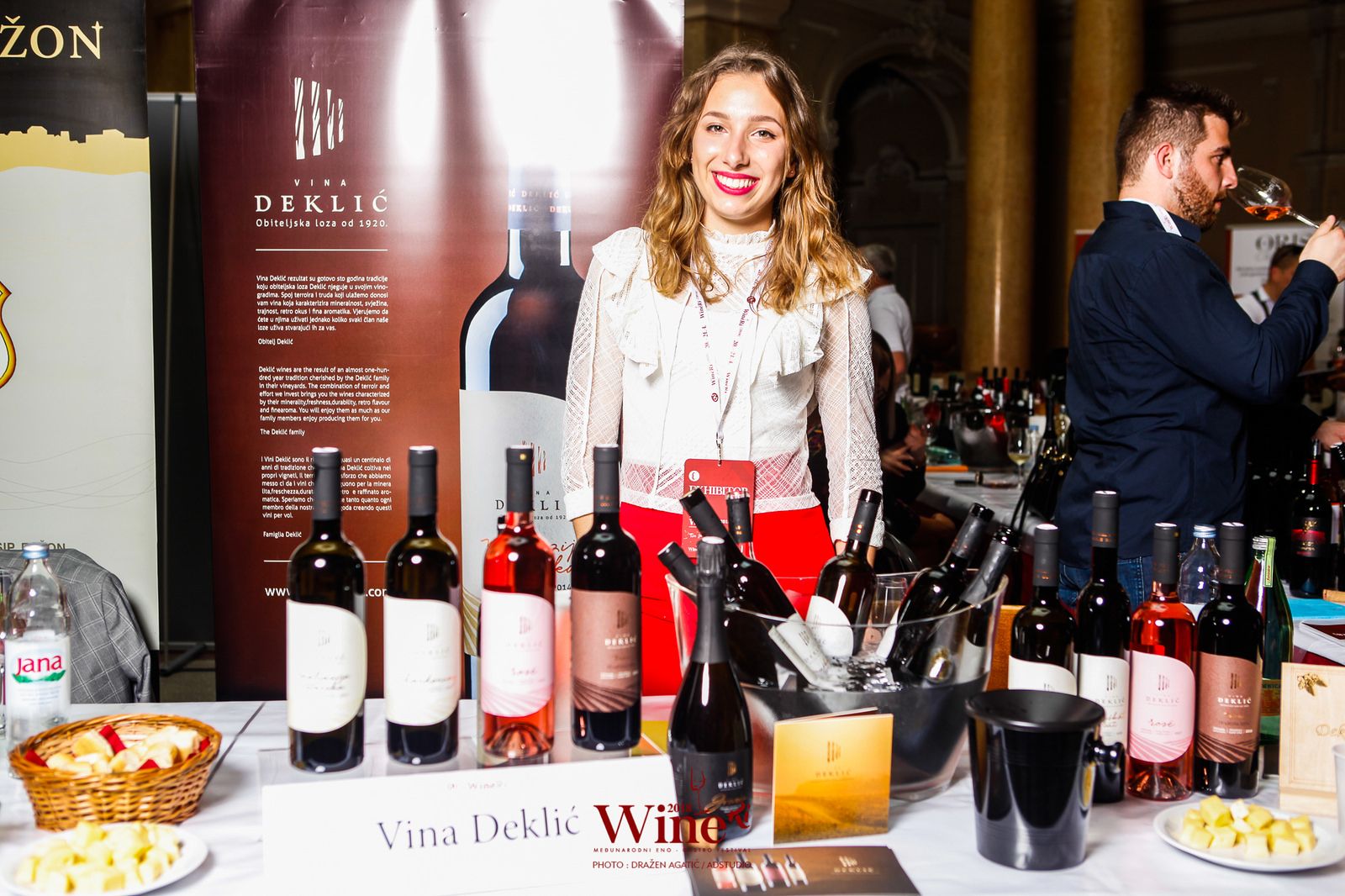
The sponsors of the festival are Primorje-Gorski Kotar County, Osijek-Baranja County, Požega-Slavonia County, the Town of Rijeka, the Kvarner Tourist Board, the Rijeka Town Tourist Board, Primorje-Gorski Kotar County Chamber of Crafts and the Croatian Chamber of Commerce, Rijeka County Chamber, which will promote brands "Croatian Creation" and "Croatian Quality". The media sponsors of the festival are Novi List, La Voce del Popolo, Gastronaut.hr, vino.rs, svijetvina.hr, GetReport, fiuman.hr, rijecanin.rtl.hr, torpedo.media, crikva.hr.
In cooperation with the Chamber of Commerce of Primorje-Gorski Kotar County, the Croatian Chamber of Commerce, Rijeka County Chamber and Gastronaut.hr, more than 2,000 representatives of the Kvarner catering industry will be invited to the festival, while GetReport from Zagreb will bring the most significant Croatian wine and gastronomy journalist.
More news about Croatian wines can be found in the Lifestyle section.
Vinart Grand Tasting and Vinart Petite Tasting Events Announced
“We want to encourage and develop excellence, and therefore we have invested a lot of effort in the selection of best wines, the quality of our workshops and the overall experience," said the creator of the project and the chief organizer Saša Špiranec at the presentation of Vinart Grand Tasting, a wine festival which will be held for the fourth time on March 1 and 2 at Lauba in Zagreb.
This time, 120 winemakers have been selected for the two-day wine festival, while in late February the DoubleTree Hotel by Hilton will host as many as 20 specialised workshops and the first edition of Vinart Petite Tasting, which is one of the new projects from Vinart's team. All in all, it will be full two weeks entirely dedicated to wines.
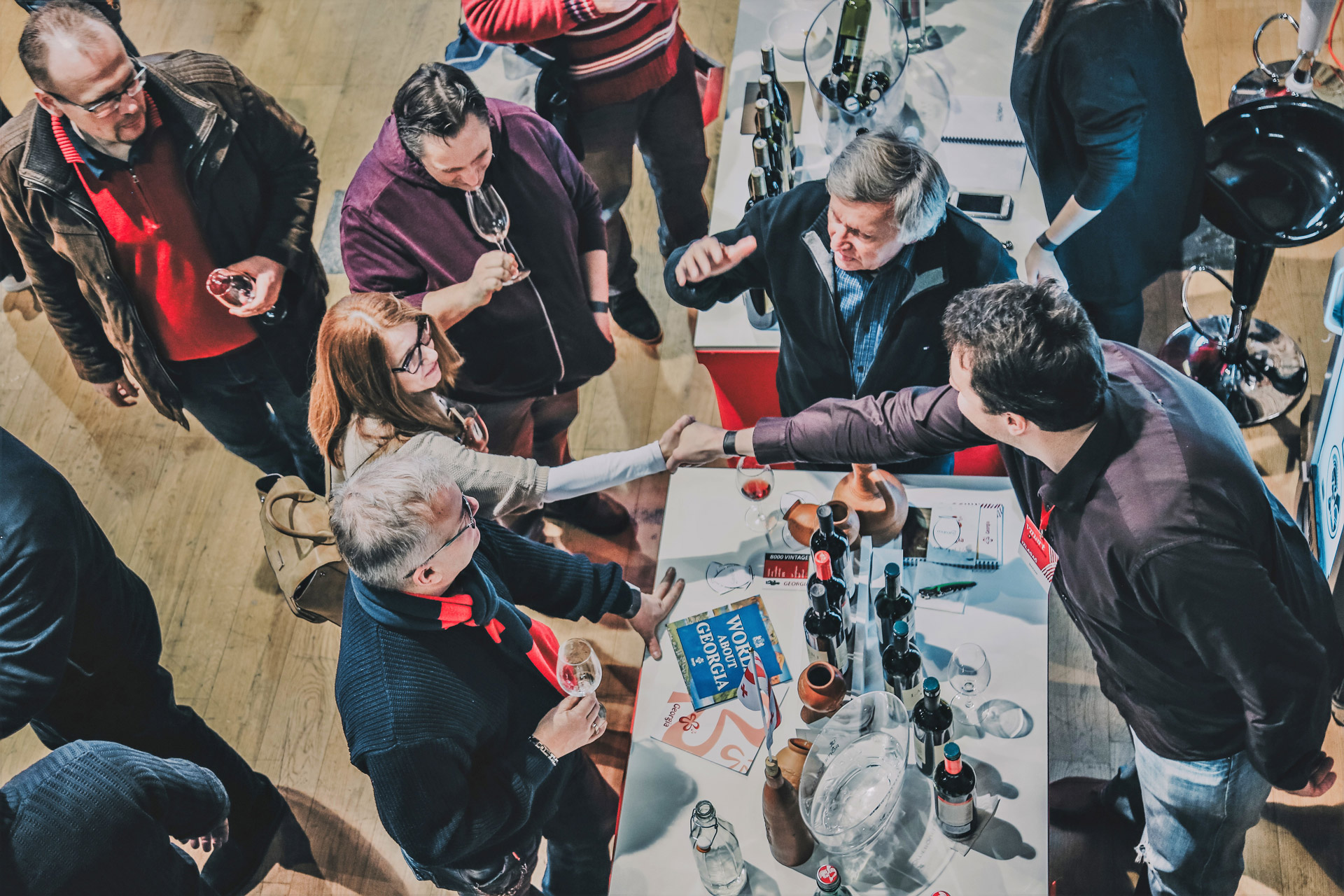
Grand Tasting is an event which has been marked on calendars of wine fans and wine professionals for the fourth year in a row, and functions as an invitation festival where organisers host the best and most interesting Croatian winemakers and their colleagues from other countries. In the same vein, the day before the official start of the festival, on February 28, the DoubleTree Hotel by Hilton will host the first topical festival called Vinart Petite Tasting, which will present wines from the countries in the region, i.e. wines from newer members of the European Union, named the New Europe Terroirs. Visitors will be shown with 130 wine labels from 12 countries: Slovenia, Hungary, Croatia, Serbia, Bosnia and Herzegovina, Romania, Czech Republic, Slovakia, Georgia, Macedonia, Moldova and Turkey – which all strongly express the unique microclimatic and pedological conditions in which they are created.
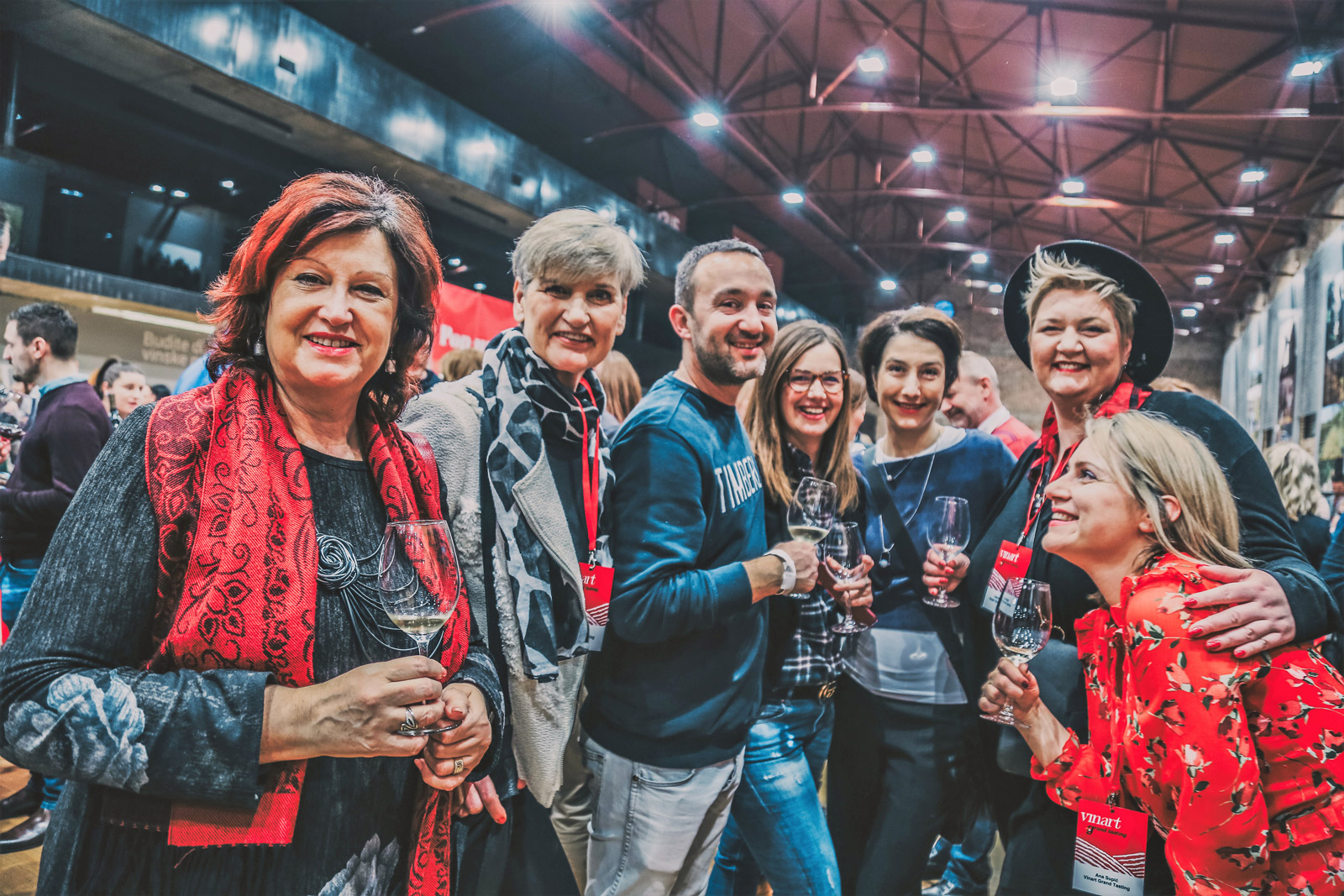
"Most of the wines and winemakers that will come are unknown to the Croatian wine circles, so we believe that we are bringing something unique, new and different," said Špiranec, adding that in preparing the wine list for Petite Tasting they have selected mainly local autochthonous varieties, although there are some international ones as well. "The key elements were the excellent results in the given area and unique expression," explained Špiranec.
Some of the labels presented will be Veliko Belo (Movia), Rebula (Jakončič), Renski Rizling (Protner), Mjesečar (Brkić), Blatina Carsus (Škegro), Graffiti (Bjelica), Kremen Kamen (Matalj), Ryzlink Vlašski (Gala), Takvkveri (Gotsa), Feteasca Neagra (Bala Geza), Franz Ferdinand (Markus), Ocu (Boškinac), Santa Elizabeta (Benvenuti) and many, many others.
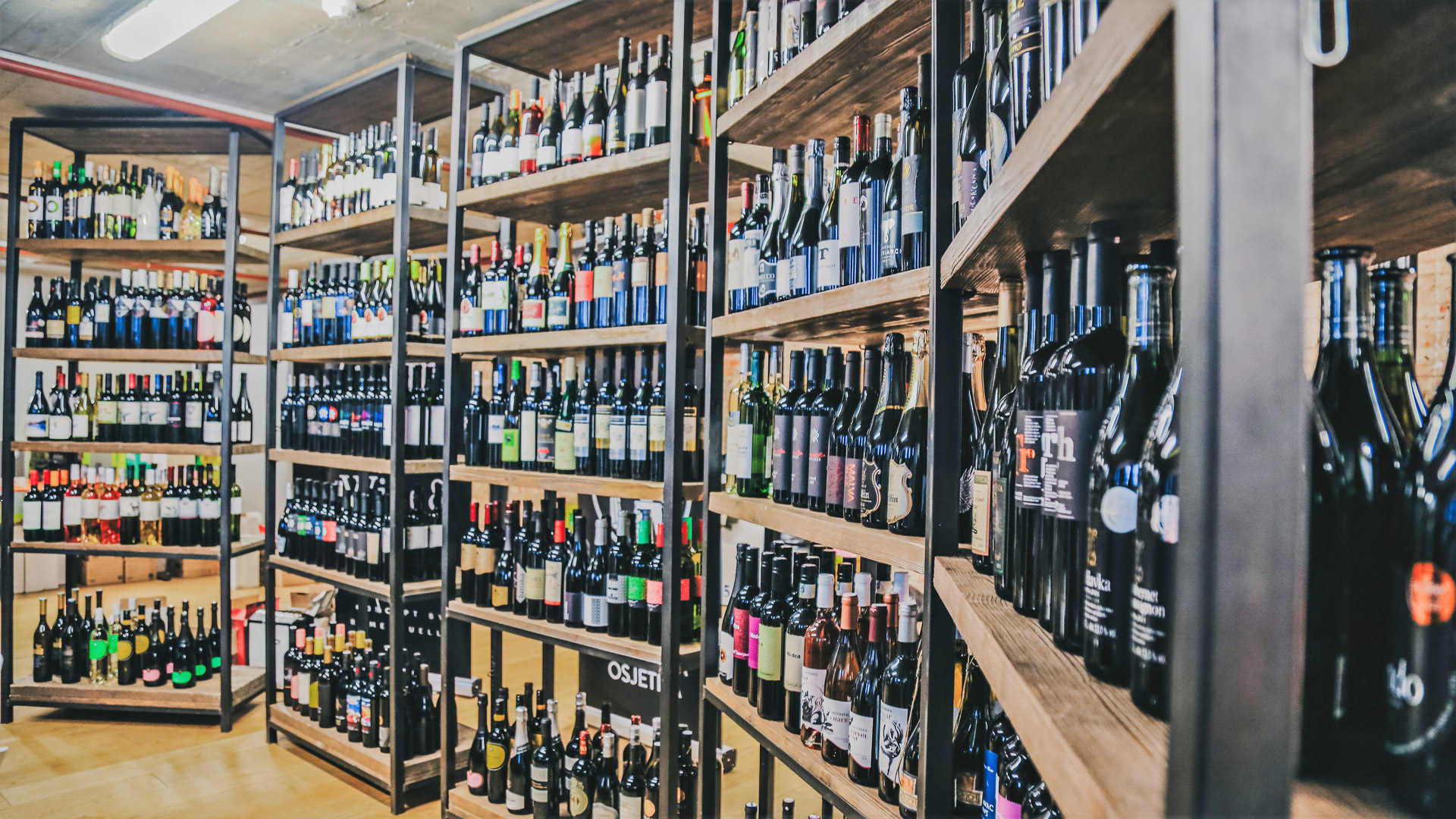
This year, the festival will also host a prestigious international name from the wine circles – Anthony Rose, who writes about wines for Decanter and Independent, and who is the vice president of the Decanter World Wine Awards Australia panel. This will be an excellent opportunity for Croatia to present him with the selection of its best wines.
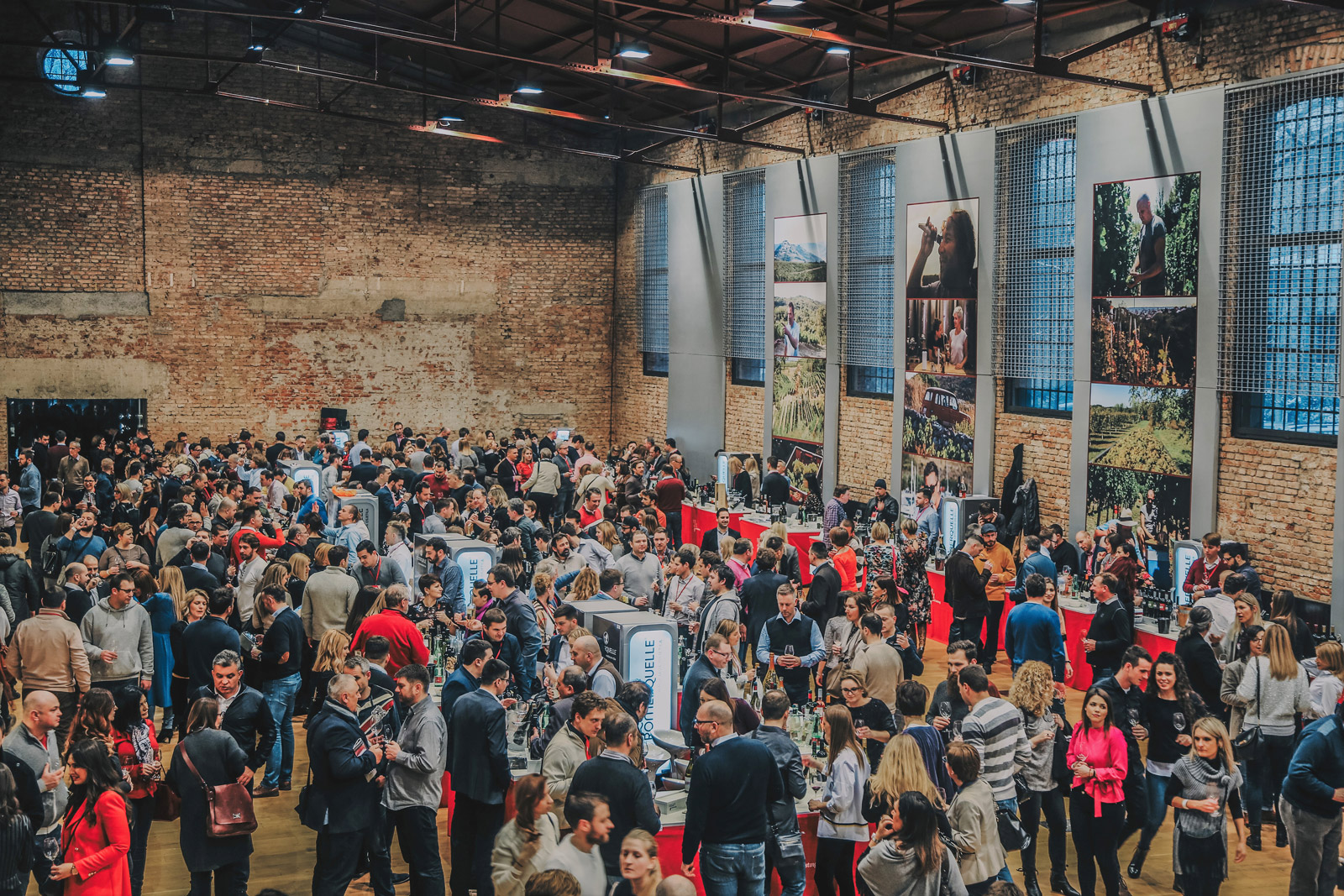
Wine professionals and wine fans will be able to attend exciting wine workshops even before the festival starts, as early as from February 22, and tickets for them are already available for sale at the Vinart Grand Tasting website. At the festival itself, the visitors will have available a pop-up wine shop with the presented wines, and for every festival ticket, you buy there will be discounts for the pop-up wine shop or for using taxi services.
More news about Croatian wines can be found in the Lifestyle section.
Feravino and WOW Present New Sparkling Wines
When the WOW Association, bringing together nearly 200 women from all over Croatia, joins forces with an excellent wine producer like Feravino and a bar hidden at the yard of 50 Ilica St. in Zagreb – and the event is taking place on Valentine's Day – the success is guaranteed. And when the evening includes sparkling wines, a lot of love and a great atmosphere – all under the slogan “It's All About Love” – the memories remain forever.
In the past five years, the Swanky Monkey Garden Bar has expanded its wine list, which currently includes some twenty different Croatian and international labels. Despite the industrial design of the interior, with its energy and warmth, it has awoken positive energy among the wine fans gathered there on Valentine's Day evening. The presenters of sparkling wines were Maja Kuzmanović from WOW and Alen Britvarević from Feravino, while Swanky’s chief barman and co-founder of Art of Bar, Filip Lipnik, designed exclusively for Feravino two signature cocktails based on sparkling wines and carefully selected liqueurs which were ideally paired with them.
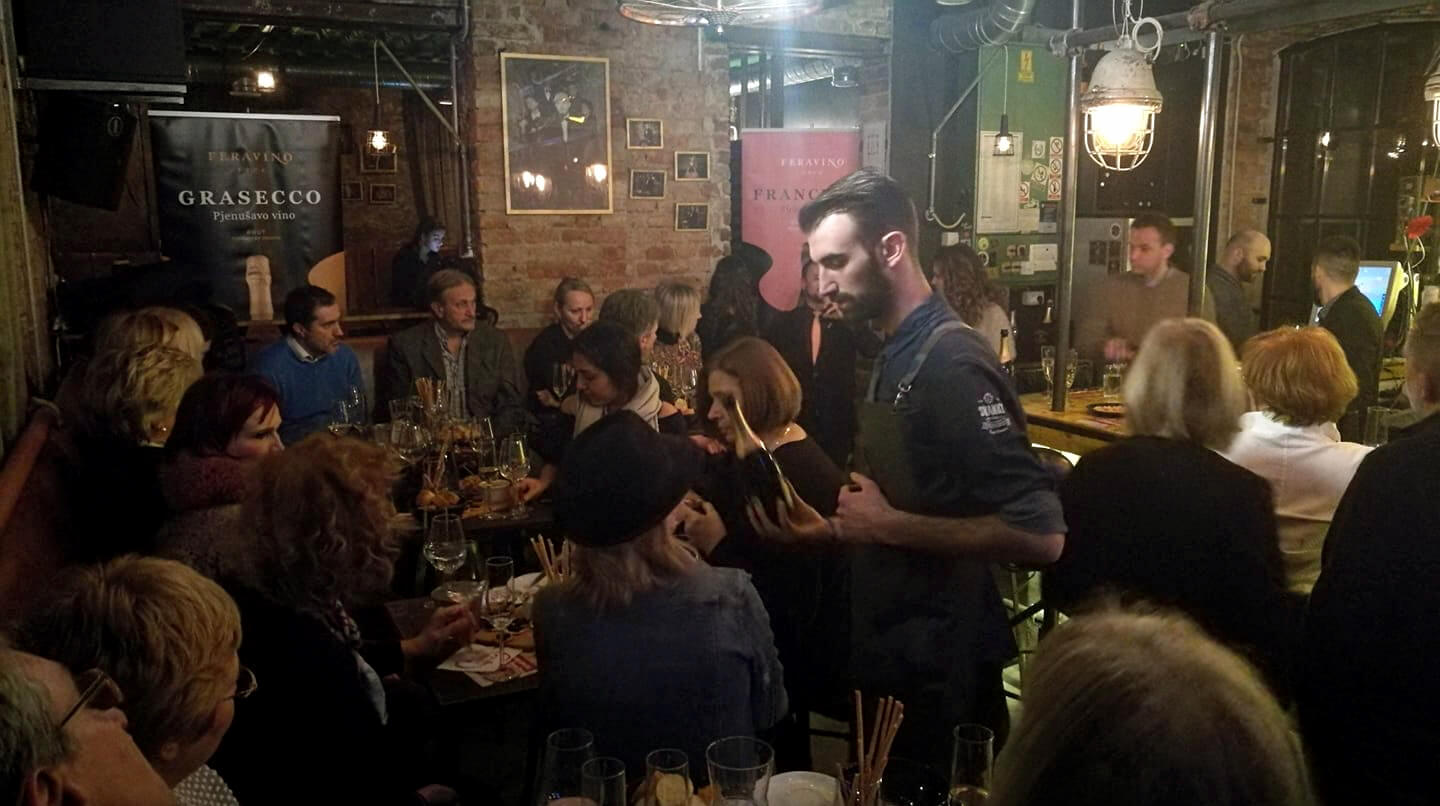
That evening the cocktails were mixed and presented by the young Karlo Bošnjak, named Carlito for the occasion, while Britvarević said at the beginning: “Last year, the cellar in Feričanci was equipped with new filling equipment for filling still and sparkling wines. It is now a modern plant with three autoclaves for the production of sparkling wines according to the Charmat method, which is a completely new technology in our cellar since we used to produce sparkling wines according to the classic method of in-bottle fermentation. Our new products – Grasecco and Francesca – are 100% Croatian products and they are produced by this new method which is typical for the production of Italian prosecco wines. We are extremely pleased with the market's response, so I must congratulate our young oenologist Antonia Čeme and the guest oenologist Matjaž Lemut,” he said, emphasizing the affordable price of 50 kuna of both sparkling wines.
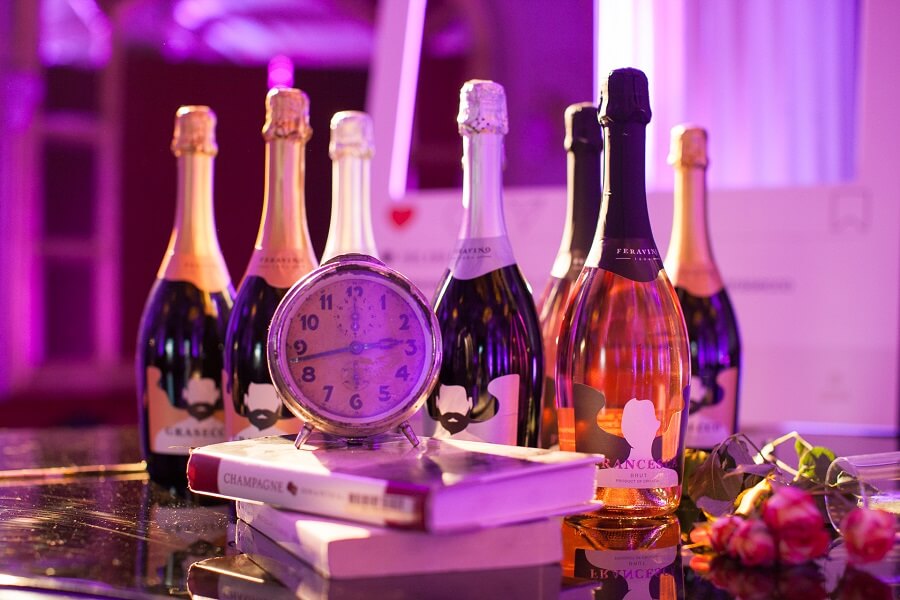
The Grasecco and Francesca sparkling wines, which had their gala premiere at the Croatian National Theatre in Zagreb in September, were the real stars of the evening. They are refreshing and light, perfect for the summer, but also for spring, autumn and winter, said guest sommelier Mario Meštrović. Grasecco is wholly-made from Graševina, while Francesca is wholly-made from Frankovka, both with modern, crazy, hipster and entirely different labels than those we are used to from local producers.
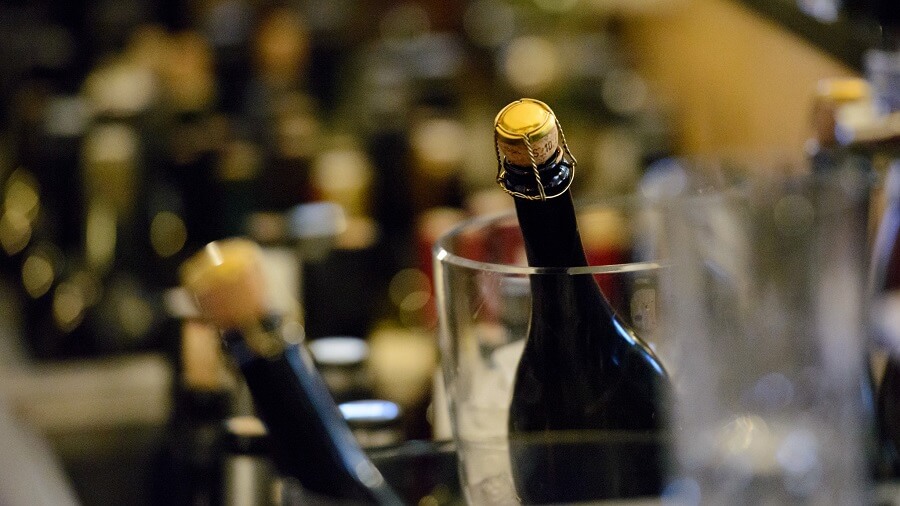
“The author of the brilliant, modern, hipster, trendy label is the well-known Croatian designer Miran Tomičić, the creative director of the Octopus Ink brand design agency, and it is inspired by our consumers who are reflected in it. The idea was to create a contemporary, playful, youthful brand based on the local approach and tradition. Consumers today do not just want a product, they are looking for something more – they are looking for a story. They do not just use a brand, they follow it, listen and talk to it. They care about the rationale of the brand and its visual identity,” said Britvarević.
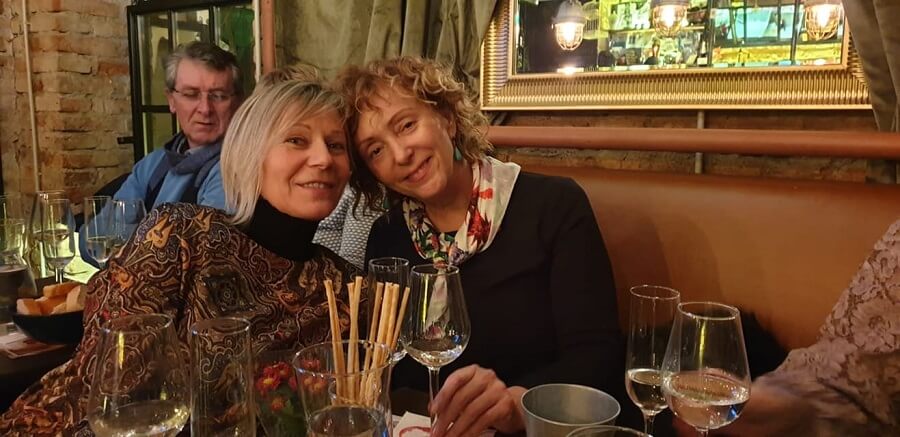
At Swanky, the evening began with the Extra Brut Grasecco of a gently greenish colour that was matched with the Granny Smith apples and Smoki, which revealed the strength of its beads and the excellent pairing of its scent of green apple and a delicious almond bitterness of Graševina for the aftertaste. The evening continued with the tasting of Grasecco in the Brut variant with tortilla chips, and everyone was delighted to welcome Francesca, which wins you over with delicate pink colour and the subtle scent of ripe pomegranate, and a rich and long-lasting flavour dominated by strawberries and raspberries. Francesca was excellently paired with a delicious liver pate that was prepared according to a unique recipe by Ivan Srpek from the Bornstein Wine Shop and Wine Bar. The event organiser Vlasta Pirnat presented Karlo, the bartender who made excellent cocktails for the conclusion of the evening. These were Miss with Francesca and Brko with Grasecco.
Andrija Pirnat, the host and co-owner of Swanky, welcomed the guests and briefly introduced his already well-known bar. One thing is sure: we had a wonderful time, perfectly tailored for Valentine's Day, and we will drink these sparkling wines and cocktails on other occasions as well. Now we have a Croatian answer to Italian prosecco and fantastic cocktails at the excellent Swanky Monkey Garden ambience. WOW!
More news about Croatian wines can be found in the Lifestyle section.
From Melbourne to Kyoto, Hvar Grapes on Tour with British Master of Wine
February 15, 2019 - A British Master of Wine, some grapes from Hvar, and wine-drinking audiences in Japan and Australia.
It is one of my favourite Croatian wine stories, and one which is truly going international.
Croatia, of course, has already made several significant contributions to the international wine story. The original Zinfandel comes from Kastela, just outside Split, the contribution of Miljenko 'Mike' Grgic in California is much talked about since the famous Judgment of Paris in 1976, and the rise of the New Zealand wine story owes a debt to Sir George Fistonish, whose family hailed from Hvar.
And now the grapes of Hvar are popping up in the unlikeliest places - Tokyo, Kyoto, Adelaide, Melbourne and Sydney. And not through a Hvar winemaker, but a British winemaker making the very best of the indigenous grapes of Hvar - grapes from Hvar, hands from London - including one which was named in the top 10 wines in all Croatia in 2017.
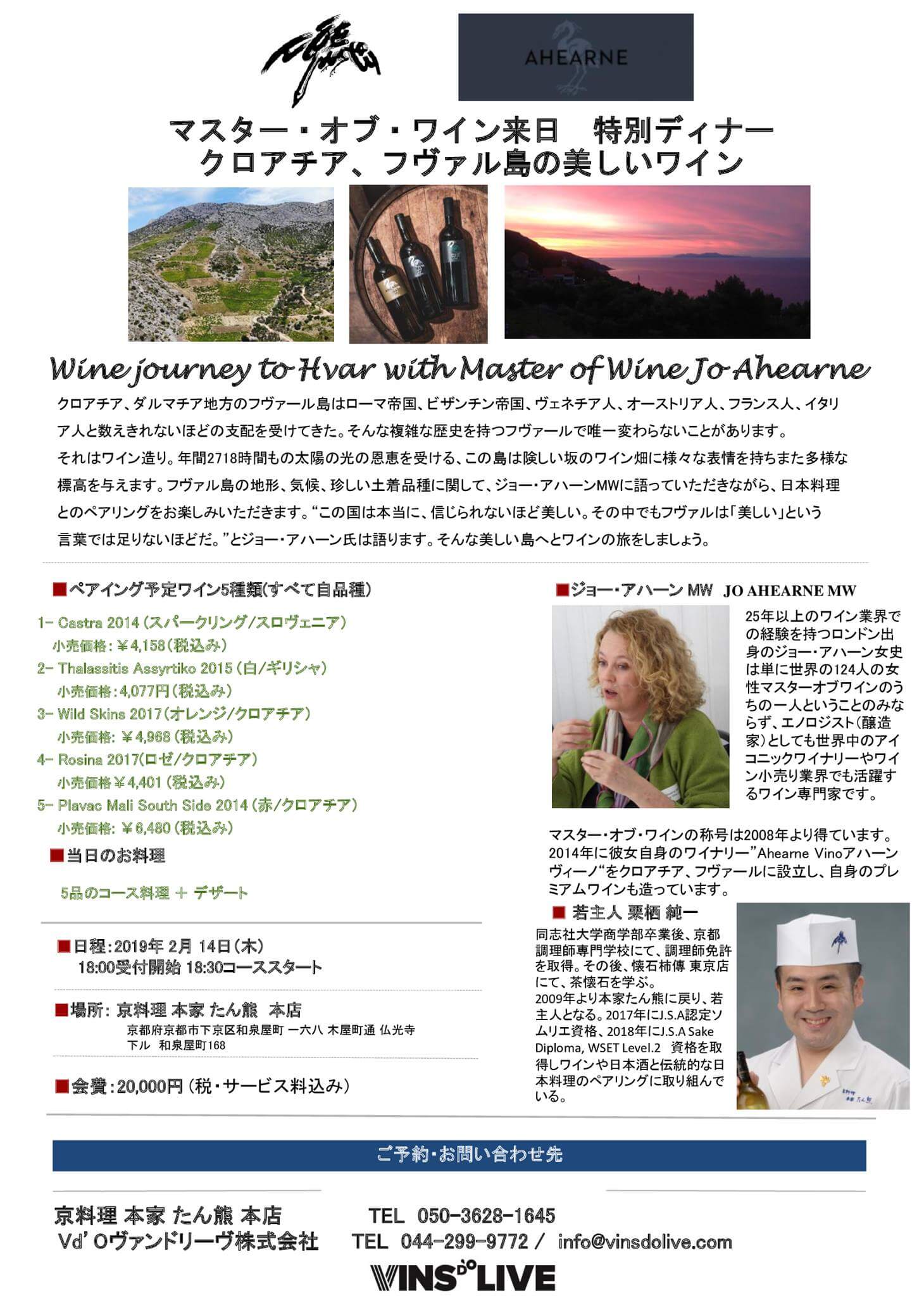
It is almost 5 years since I first interviewed Jo Ahearne MW at a Plavac Mali masterclass by Sasa Spiranec at Dalmacija Wine Expo. Things moved quickly after that, with Ahearne deciding to move to the island of Hvar to make her own wine using the indigenous grapes of the island. Her first product for the market was a rosé called Rosina from the local Darnekusa grape.
The first Master of Wine to make wine in Croatia, Ahearne faced the additional challenges of island living, Croatian bureaucracy and running a business in a country where she does not speak the language. But progress has been steady, and the national - and international - reputation of her wines has been growing steadily.
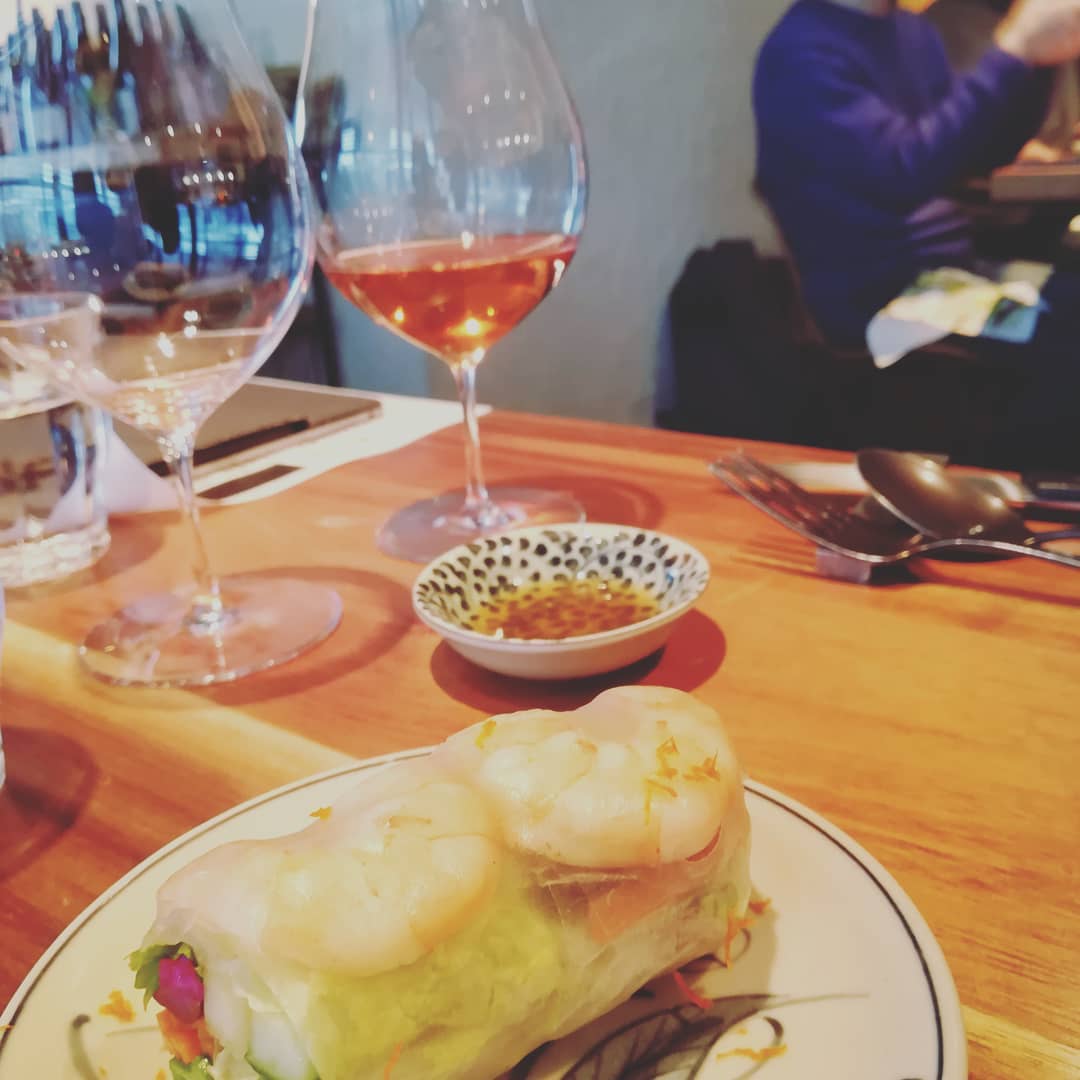
And reaching parts of the globe where no Hvar wines have gone before. New clients in both Australia and Japan have imported the wines from Ahearne Vino, and Jo Ahearne is currently on a promotional tour of her wines. it has led to some rather interesting food pairings:
"Rosina paired with red prawn Vietnamese rice roll and a hint of orange skin grated over it. Genius pairing."
Ahearne in action in Tokyo, at a seminar organised by Japanese importer, Vins d''Olive.
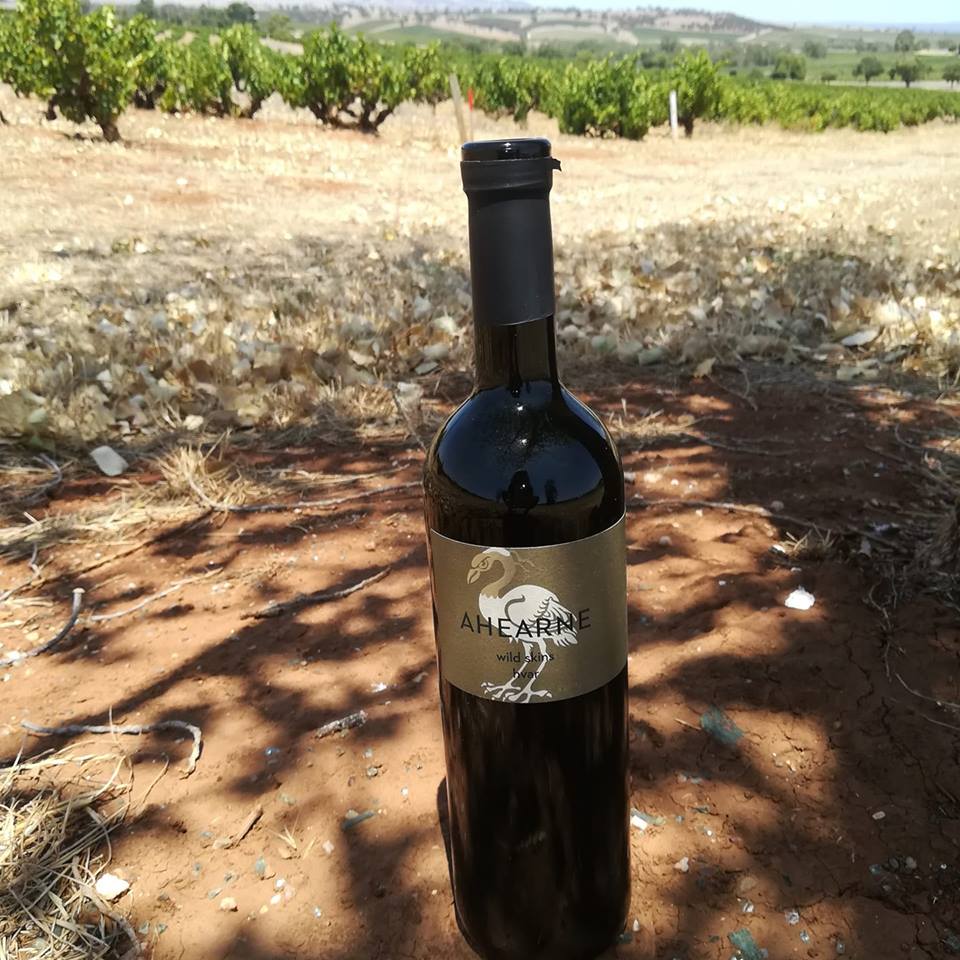
The tastings in Tokyo and Kyoto followed Australian appearances in Adelaide, Melbourne and Sydney. Above, Wild Skins, a cuvee of Bogdanusa, Kuc and Posip, relaxing in the shade in the Barossa Valley.
Grapes from Hvar, Hands from London - a winning combination which is taking the Hvar wine story to a different level.
To follow the latest from Ahearne Vino, follow them on Facebook.
Splendid Istrian Malvasia Wines Presented at En Primeur
More than sixty winemakers presented their splendid Istrian Malvasia wines at the recently held En Primeur at the Esplanade Hotel in Zagreb. In addition to the Istrian Jelenić prosciutto and Latus cheeses, this year they were joined by several producers of Žlahtina and some twenty winemakers from the Hilly Croatia region. Almost 700 visitors attended the event.
“The largest ever number of winemakers taking part in En Primeur confirms that this unique event – which we first organised in 2012 – is growing year after year. I am pleased that every year there is an increase in the number of caterers, sommeliers, distributors and wine connoisseurs who enjoy Malvasia from all parts of Istria. This is a unique opportunity to get acquainted with the characteristics of the latest harvest, and the year 2018 has given us wines of great potential and high quality,” said Nikola Benvenuti, the president of Vinistra, the Association of Winemakers and Winegrowers of Istria, which organised En Primeur, together with the Winemaking Association of the Croatian Chamber of Commerce.
“The improvement in the reputation of Croatian wines can be seen in numbers. Wine exports rose by more than 22 per cent in the first ten months of last year in the higher-price wine category. Since Malvasia is one of the favourite wines among tourists, I expect that wines will contribute to the tourist offer and tourist identity of Croatia. The Croatian Chamber of Commerce and its Winemaking Association, together with the national brand we have developed, Vina Croatia – Vina Mosaica, will continue to work on the international promotion of Croatian wines, for which we will use both our funds and the funds from the EU wine envelope,” said the vice-president for agriculture and tourism of the Croatian Chamber of Commerce Dragan Kovačević.
The young Malvasias delighted Zagreb Mayor Milan Bandić, who came to greet the Istrian winemakers as usual, and the support was also given by Ezio Pinzan, head of the Agriculture Department of the Istrian County. “I have once again seen that there are no bad wines in Istria. Today we can only talk about good and even better Malvasias. Our technology is at the world-class level, while Istrian winemakers are well-educated and are continually improving their knowledge, which is an excellent addition to the tradition we have in the winemaking industry. The only element by which the Malvasias differ is the shade of the terroir, i.e. the location from which they come from,” Pinzan said.
The terroir was the topic of a workshop held as part of the event for the second year in a row. Mario Staver, PhD, from the Poreč Agricultural Department of the Rijeka Polytechnic, presented nine Malvasias from five different parts of the Istrian peninsula. He concluded that the young Malvasias reflected typical colour and aroma with dominant fruity scents, and thanks to the favourable weather conditions, the cutting-edge technology and the skills of Istrian winemakers, this year we will drink excellent wines.
More news about wines in Croatia can be found in the Lifestyle section.
Golden Slavonia Flavours for Regeneration after Recreation at Papuk Nature Park
Recent news from the Papuk Nature Park has pleasantly surprised us. In late February, visitors will be able to experience Papuk with a flying balloon; one week ago, works on the construction of the Geo-Info Centre in Voćin started, where geologic, biological and cultural-historical landmarks of the nature park will be presented to the visitors. Papuk is drawing ever more interest from tourists at specialised international fairs such as Natour Alpe-Adria in Ljubljana and Caravan in the Dutch town of Leeuwarden.
At the fair in the Netherlands, I found myself entirely by chance in the role of an information officer at the stand of the Slavonia Cluster, which brings together five Slavonian county tourist boards, and I saw for myself that Papuk is at the top of the visitors' wish-lists. People are thrilled to be able to camp at the Duboka camp and then use the network of cycling trails to visit cultural monuments such as medieval fortresses, geological monuments like Rupnica, protected natural landscapes such as the Sekulinačke Mountains, enjoy the top gastronomy in restaurants bearing the Taste of Slavonia mark, or engage in wine tasting in one of the many boutique wineries located at the outskirts of the park.
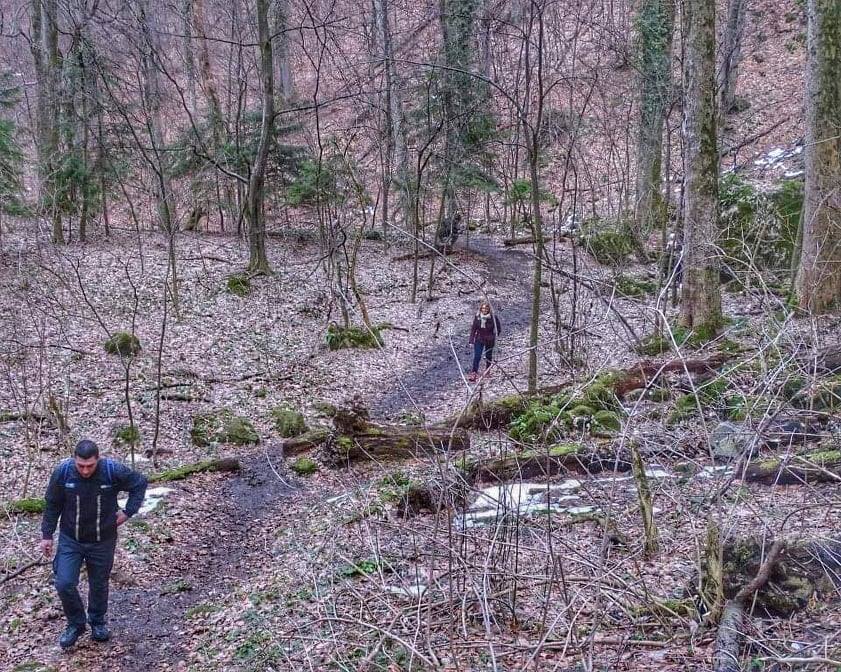
After a tour that included Zagreb, Hungary and Slovakia, I decided to use the first available Sunday in February to visit Papuk. A five-kilometre long spiral road that runs from Slatinski Drenovac to Jankovac is almost entirely paved, with just a short section missing at the very end, but construction machines are parked along the road, so I believe this will be solved very soon.
The road itself is attractive enough for the visitors to be able to see (at least some) of the beauties of the Papuk landscapes. On the left, there is a steep ravine, and on the right side, there is the mountain massif. The road is continually twirling and driving on it is never monotonous. Drenovac is located at 172 metres above sea level and Jankovac at 475 metres. Before Jankovac, visitors pass by the majestic waterfall called Skakavac. Given that the summit of Papuk is located 953 metres above sea level, it is easy to see that Jankovac is located "on the halfway of Papuk" and is, therefore, an ideal starting point for exploring the Slavonian mountain.
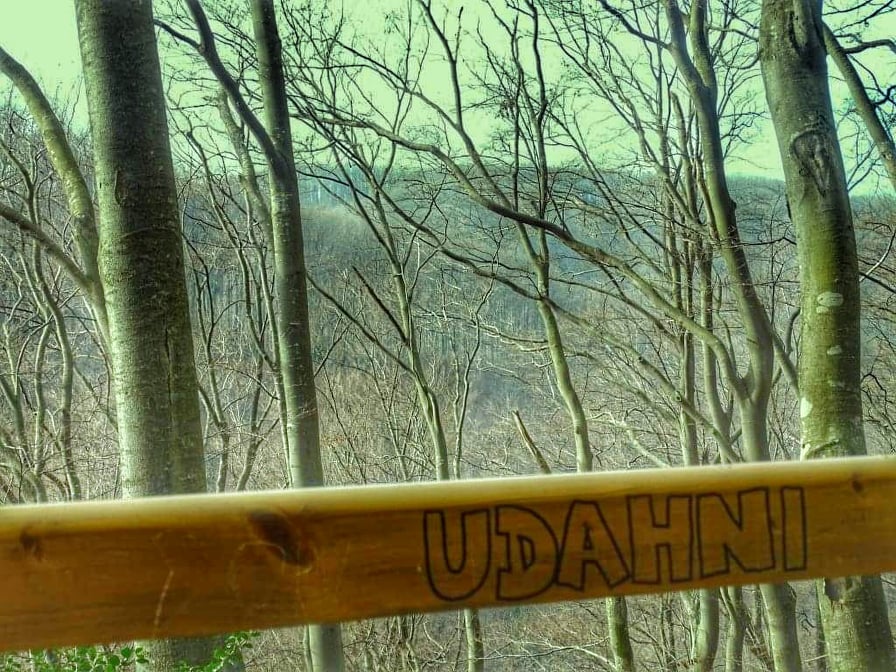
At Jankovac, there are a lot of cars and visitors. From the entrance, we turn right and look for a parking spot. Hmmm ..., parking problems at Jankovac!? Part of the team complains that this was not as it used to be and all of this has been over-commercialised. But, why should we be jealous? Why not allow other people to enjoy something we have been enjoying for years, not to say for decades? Of course, provided it does not disturb the natural balance.
The natural heritage belongs to all of us, and everyone should enjoy it under the same conditions. We saw a parking spot and just when we wanted to park there, we saw an unusual traffic sign next to the parking spot: below the letter P, a woman and a baby carriage were drawn; this parking is reserved for women with small children! Since we do not fall into that category, we went a bit further and finally found a free parking place. After that, at the reception centre, we bought tickets which cost just ten kuna. I took a photo at the selfie spot and sent a digital postcard from Papuk to my friends and acquaintances.
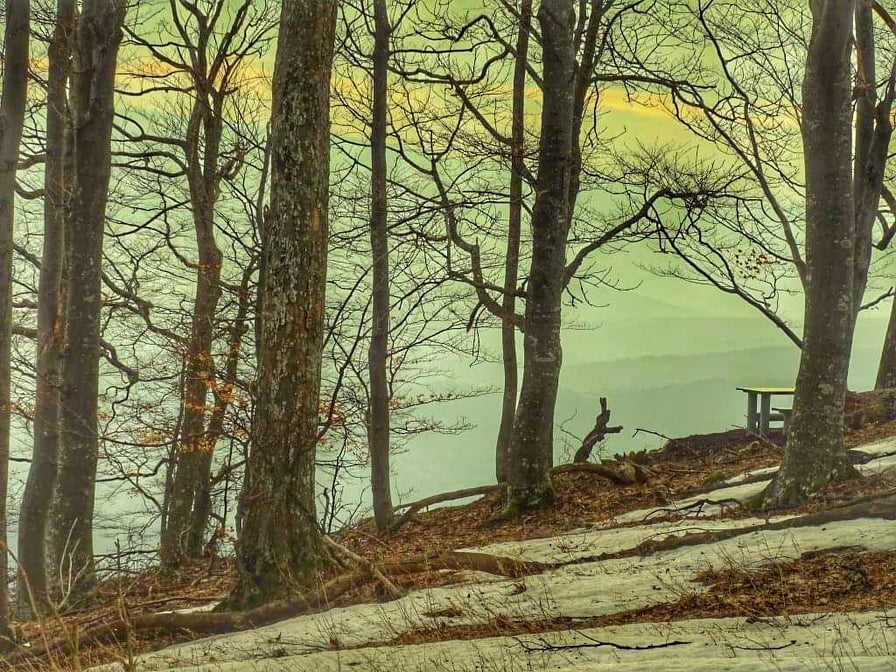
The temperature was, of course, lower than in the Slavonian lowlands from which we came. We went to a hiking lodge with a cafe, a restaurant and a pension, and had a short drink just enough to get warm inside and prepare for a hike in nature.
Because of the high snow banks that were still present on Papuk (unlike in the Slavonian lowlands where the snow had almost completely melted), and because I led a team that did not have the proper equipment for hiking in winter, we did not do the routine rituals like a visit to Ivačka Glava, the second highest peak of Papuk at 913 metres above sea level and the highest peak of the mountain accessible to ordinary visitors (there is a military facility at the very top; therefore it is closed and inaccessible), or to Nevoljaš, located at 740 metres above sea level, where there is a viewing point offering great views.
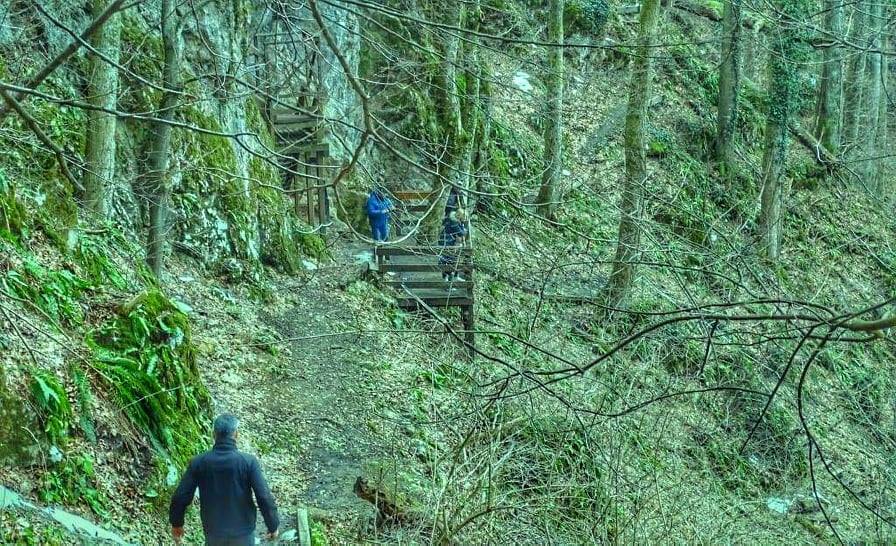
We had to settle for hiking on the educational trail. The Count Education Trail is named after Count Josip Janković, who also gave his name to Jankovac. One of the stations of the path is the count's final resting place located in a cave. There is also a cave with bats, viewing points, refreshment points, wooded stairs that make climbing easier...
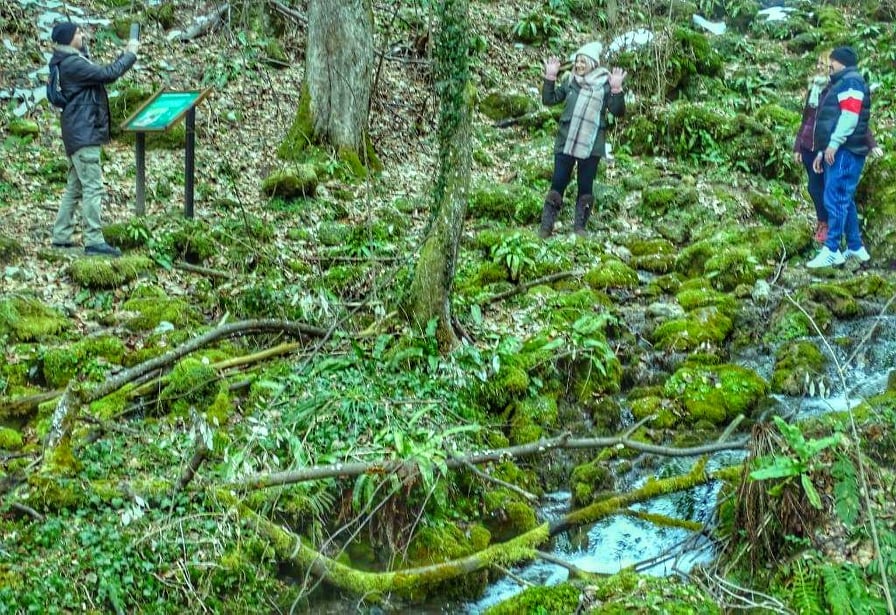
After a leisurely tour of the educational trail that lasted for an unusually long time, we again found ourselves in front of the hiking lodge and saw a car with Požega registration plates all muddy. It was immediately clear that it came from the southern side of Papuk, from the direction of Velika, which still does not have a paved road. But that was a sign that this road was passable. We got into the car and headed for Velika towards which there is a macadam road three times longer than the one leading from Jankovac to Drenovac.
Along the way, we stopped near the Papuk summit. A soldier in the uniform behind the fence greeted us and asked, "To the bench, right?" And we answered vaguely: "Of course!" He only smiled and waved us in with his hand, used to the many visitors coming there. When passing along the fence of the military facility, you come to a forest opening on whose right side there is a bench with fantastic views of Papuk. The hike on the educational trail was too little for us, so we had to stop there to get to know Papuk better.
We arrived in Velika (the location of the first of the two camps in Požega-Slavonia County), at the Čiča Mata cafe where we drank a homemade herb brandy and continued towards the Zlatni Lug tavern, located in Donji Emovci, a small suburb of Požega. Zlatni Lug is just one part of a larger tourist complex that has the tavern/restaurant, an excursion site, a lodging house, a souvenir shop and a camp – the second camp in Požega County.
The Zlatni Log restaurant is decorated in a rustic style and has the "Tastes of Golden Slavonia" mark, which means it offers local dishes 365 days a year. We ordered homemade brandy and bread with lard made of a black Slavonian pig as an appetiser. The pig lard is a traditional Slavonian ingredient which has long been neglected, but is now becoming more prominent and appreciated, and it has its well-deserved place in the local restaurant offer. This is supported by the latest research which shows that pig fat is healthier than oil. The fats are transformed into energy and stimulate absorption of vitamins and do not contain synthetic substances, unlike margarine and industrial oils.

Although the Zlatni Lug restaurant is also known for its delicacies made from the autochthonous Pannonian Podolac cattle, since I started with pork, I continued in this vein and ordered a pork chop with bacon and “kajmak,” along with the Šopska salad. It was a perfect combination. Of the other specialities, the restaurant offers a turkey steak in gorgonzola sauce, a green pepper steak, grilled or in mushroom sauce, trout in pumpkin seeds, a perch fillet with cream and garlic, carp grilled on a fork, the winegrower’s kebab, and the fried pork brains in eggs — something for everybody.
During the dinner at the restaurant, we remembered the legendary beer festival called the Požega Beer Mug, which was held until two years ago at the nearby Zlatni Lug excursion site. Wishing to taste the local beers, we went to Požega and visited the Slawoner pub. I tried the Slawoner Kriek – a draught beer with a sour cherry, which impressed me at homebrewing/craft brewing meet in Đakovo last year when I first tasted it. Slawoner is also the name of the first Požega craft brewery founded and managed by Sandi Mance, one of the pioneers of craft brewing in Slavonia. Apart from locally-made beers, the Slawoner pub offers a whole range of other crafts beers, but my rule is always to try local, preferably draught beer.
In addition to the brilliant and long-established winemaking scene, the Golden Valley also has a strong beermaking scene, and all of this completes the flavours of the Golden Slavonia. For tastes to reach their full intensity, it is necessary to be reasonably hungry and thirsty, which Papuk took care of; or, as we said in the headline of this article: after recreation there comes regeneration. All in all, this was a wonderful excursion, and this article is a recommendation and a roadmap for everyone how to spend a weekend combining the enjoyment of untouched nature with the delights of indulging in local delicacies.
More news about the Papuk Nature Park can be found in the Travel section.
Wine Conversations Launched
Together with the Procaffe coffee shop in Tkalčićeva Street in Zagreb, the G.E.T. Association for the Culture of the Table has launched a series of events called Wine Conversations with Tomislav Stiplošek and Visiting Wineries. The project will present some of the wineries which are less represented in the media, with a few exceptions, and the concept is designed as a talk show interacting with the audience.
The first Wine Conversation was held on February 7, with the wines produced by the Jakovac winery from the Erdut wine area. The guests were brothers Ozren and Ognjen Jakovac, who inherited the winery and decided to modernise it and bring the spirit of youth into the process of wine production and brand building. They are both construction engineers and live in Zagreb, but in their spare time, they cultivate their love for wine, seeing the inherited tradition as joy, but also as a worthy commitment.
They presented the Wine Conversations audience with their high-quality wines: Graševina, Chardonnay, Traminer Aromatico and Red Cuvée (Merlot and Cabernet Sauvignon) and, as a surprise, with two wines that have not yet been released to the market – young Sauvignon (2018 vintage) and Chardonnay which, after a three-month maceration, spent the next seven months in larger (500 litre) oak barrels. It was particularly interesting to taste the two Chardonnays in parallel because the wines have been produced by grapes of the same harvest (2017), but with two different ways of wine production and cultivation, so the audience had an opportunity to see and taste the difference.
The Wine Conversations concept is conceived as a conversation between Tomislav Stiplošek and a winery representative, but with the active participation of the audience, which co-creates the event. The wines received a lot of praise, and each of them found its fans, which means that the Jakovac wine cellar range is suitable for different tastes and that the wines can be paired with various dishes, but also can be enjoyed on their own. Although the winery still does not produce sparkling wines, they do have plans for it, as well as for more investment in the winery and tourism.
After the Wine Conversations ended, the Procaffe coffee shop was a venue for the After Work Party on Thursdays – again with the Jakovac wines, as well as tasty snacks and the sounds of jazz, soul and rock performed by Sara Spinčić.
The second edition of Wine Conversations will be held in about two weeks, on February 21, with the wines offered by the Perak winery. Of course, there will be surprises for the audience as well. Although the date might seem far away, 54 Tkalčićeva Street is indeed not. At this address, you can find the Procaffe coffee shop, an ideal place to relax with a cup of coffee or enjoy a glass of wine and a snack.
More news about Croatian wines can be found in the Lifestyle section.
Photos by Silvija Munda
New WOW (Women on Wine) Website Presented
The newly-redesigned WOW (Women on Wine) website was presented to the media and friends at the first co-working space in Zagreb, the HUB385 at 6 Petračićeva Street, and its Incubator Bar. After seven years of existence, www.womenonwine.com.hr, which has so far primarily covered the association’s activities, now allows for advertising on its pages. The design of the popular website has been created by a small but propulsive company Svi na Web.
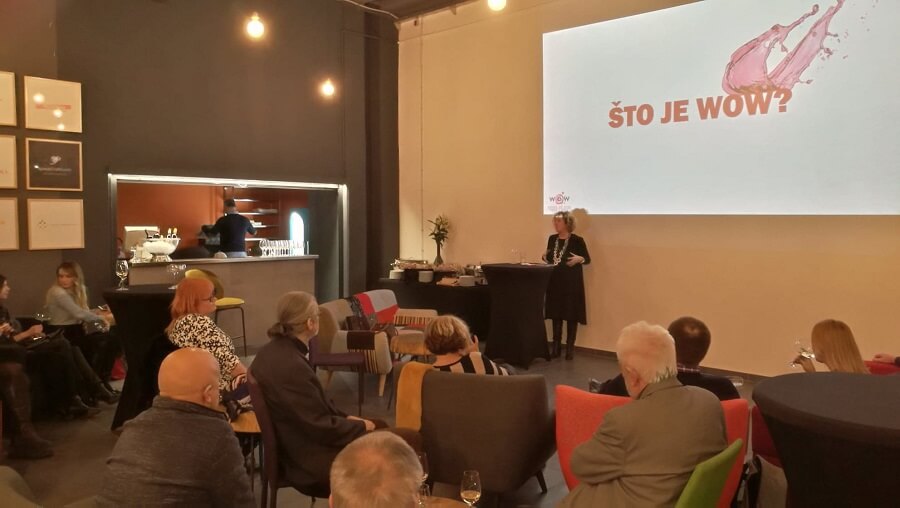
“We are authentic and we write about what we are doing, wine trips, socialising, wine promotions and education," said the journalist, founder and president of Women and Wine (WOW) association Sanja Muzaferija. "We are honest, so people trust us and we transmit our emotions towards wine to our site as well. Sometimes it seems to me that in Croatia many people are amateurs in what they are doing but know how to charge for their work very professionally. As members of the association, all we do we do with passion and more and more knowledge and in a professional manner: we promote winemakers, organise events for our members and the media, tourist wine tours and excursions, and the web – but we are amateurs when it comes to charging. Now it is time to change this, especially because digital marketing and native marketing are currently exponentially growing, especially in the niche markets, which our market certainly is. The website has served us for a long time just to publish our activities, of which there were so many that we did not have time to focus on the website itself. Given my professional journalistic background, as well as the reputation we have gained by organising the WOW Awards and the PINK DAY festival – we have decided to make our website more professional. We have the WOW FB page, the Pink Day FB site, the WOW Sympathizers FB group, the WOW and Pink Day Instagram profiles – but you cannot run a business on social networks. Some are on the rise, while others are falling behind; it is fine to use them, but the internet, meaning the web, remains,” Muzaferija explained.
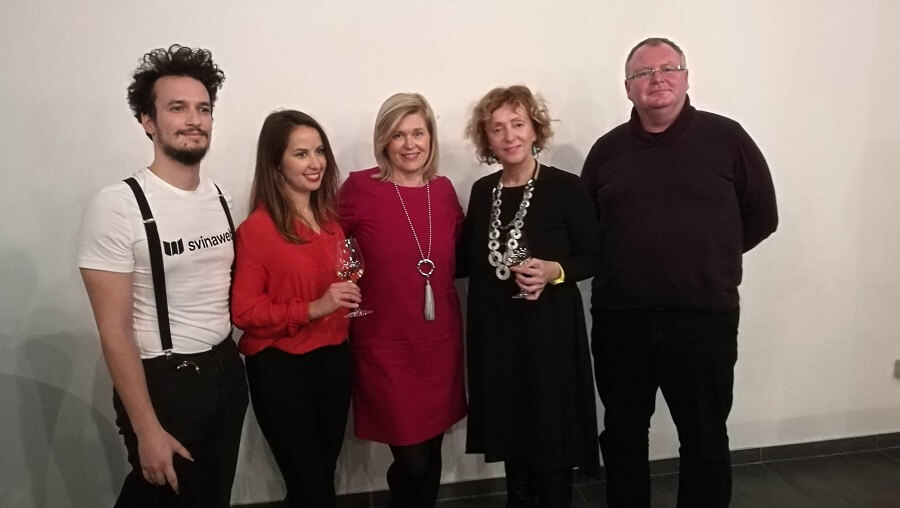
The redesigned website was presented by WOW’s web coordinator Alis Marić and Davor Debrecin from Svi na Web, along with a new WOW member Lana Bukvić, who will take over part of the duties concerning the web and social networking. Alis Marić is the author of the "Čitaj Knjigu" (Read a Book) concept, a blogger and a powerful influencer who is followed by half a million of followers on social networks, which is important because the synergistic effect with her and the “Čitaj Knjigu” raises this partnership to a new level. "Although I am recognised as the ‘Čitaj Knjigu’ creator, I was initially and still am a WOW member," Marić said.
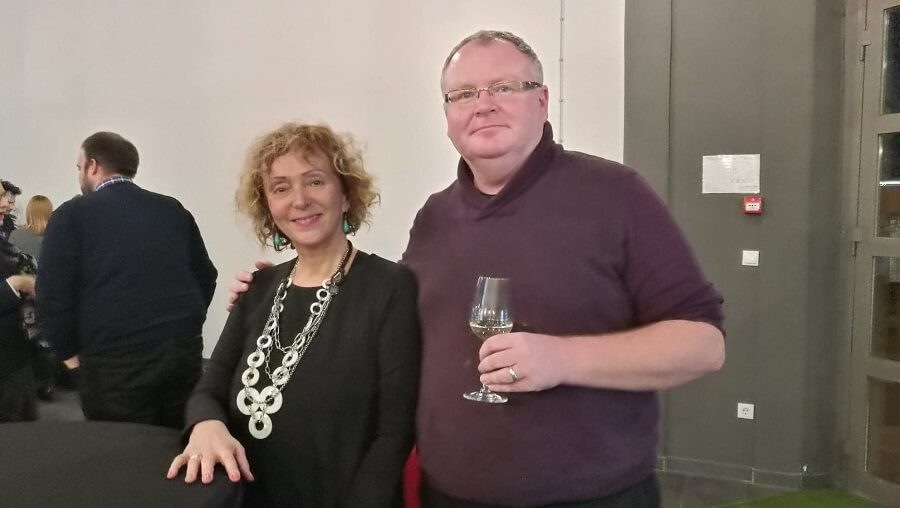
The main star of the evening was Paul Bradbury, the founder and the editor of the Total Croatia News portal – which includes a speciality website Total Croatia Wine. Since he has been working together with Sanja Muzaferija for four years, he liked her idea about a joint approach to the audience and potential advertisers. “I think that with Sanja and her team we can reach the target audience and offer shared advertising at affordable prices. You have beautiful wines in Croatia, but little is known about them abroad, and since Total Croatia News is the most read and the largest news, travel and lifestyle website about Croatia in English – I believe the future will be bright – or perhaps I should better say, due to the Pink Day – pink,” said Paul, who also presented the story of his life in Croatia, first on Hvar and now in Varaždin. Impressive figures and the reputation of the news site will undoubtedly help the redesigned WOW website undergo a commercial renaissance.
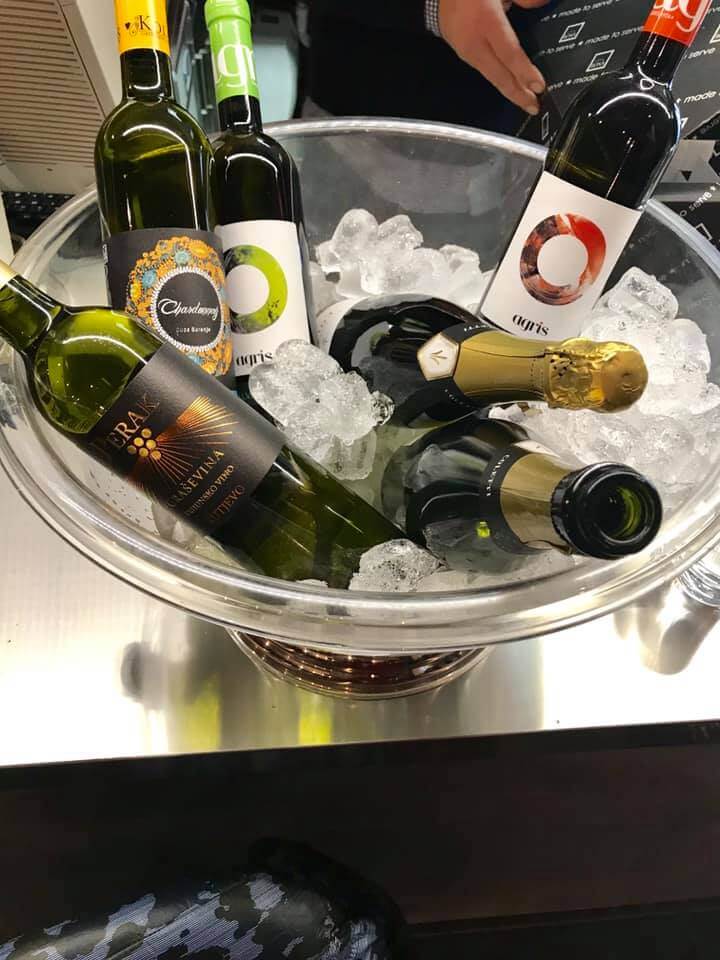
The hosts of the event also had an opportunity to present their achievements: the owner of the Incubator Bar Goran Vručinić and chef Zoran Gajić, while the guests tasted the wines produced by Kolar, Perak, Kolarić, Agris and Iločki Podrumi.
WOW (Women on Wine) is an association founded in Zagreb in 2011. Today, there are nearly 200 members from all over Croatia, with branches in Split and Rijeka. The WOW members are active in the field of the so-called culture of the table. They promote all wines, moderate enjoyment in good wines, and – in particular – women's strength in wine. They have organised over 150 events in eight years – including educations, travels, events, promotions, dinners, humanitarian drives – and each year they present WOW Awards in five categories. The winning winemakers, in the action they call "What Women Want", travel to various wine regions of the world. Gianfranco Kozlović went to Bordeaux, Saša Senjković to Champagne, Moreno Coronica to Penedes in Spain, Luka Krajančić to Burgundy, Frano Milina Bire to Austria, and the Meneghetti winery to Tuscany. The latest winner is Alen Bibić with his Amber prosecco, and it is still secret where he will travel. The most significant event organised by the association, with the help of the IMC agency, is the PINK DAY – a festival of the pink wines (and extra-virgin olive oils) whose seventh edition will be held on 30 March at the Mimara Museum.
More news about wines in Croatia can be found in the Lifestyle section.
"Wine and Spoons" Paired with Podravka at Aperitivo Bar
The fans of good food and wines, journalists Renata Cisar and Mustafa Topčagić, with the help of gastro-specialist Domagoj Jakopović Ribafish, presented an interesting wine-and-culinary concept called “Wine and Spoons” at the Aperitivo Bar in Zagreb.

Photo by Marko Čolić
Their goal is to promote the habit of consuming wine with boiled and stewed meals, which has been entirely neglected in Croatia. In making this idea happen, they were much helped by Podravka and its culinary promoters Dražen Đurišević, Zlatko Sedlanić and Zoran Delić. The popular chefs presented the Vegeta Maestro and Vegeta Natur mono-spices through six courses of meals that pair well with top-quality wines. They used the following spices: Vegeta Natur, Vegeta Natur Vegetable Cube, Vegeta Chilli, Vegeta Maestro Garlic, Vegeta Maestro Majoram, Vegeta Maestro Pepper, Vegeta Maestro Red Pepper, Vegeta Maestro Parsley, Vegeta Maestro Rosemary, Vegeta Maestro Basil, Vegeta Maestro Bay Leaf and Vegeta Maestro Cinnamon.

They created recipes and prepared delicious meals “for the spoon” for about fifty guests who, before enjoying the food and wine, refreshed their palates with Feravino's sparkling wines Grasecco and Francesca, and aperitif liqueurs from Drinkoteka – based on honey, hazelnut and prunes.

And what was offered to eat and drink at the Aperitivo bar by its exceptional host Pepo Zorić? It all started with the Zagorje soup, which was accompanied by the joyful 2017 Škrlet Ilovčak. Spoons remained in the hands to welcome the next dish – štrukle in a soup – along with the elegant 2017 Pinkert Rose. Then, seafood risotto was imaginatively paired with the continental 2017 Trdenić Pinot Blanc, while the wild game goulash was lavishly “doused” with Poletti's six-year-old Cabernet Sauvignon. “Her Majesty” sarma was solemnly accompanied by the Feravino’s "French-style" red coupage 2015 Miraz Cuvée. The most persistent guests managed to save themselves for the delicious chocolate dessert, which was readily welcomed by two Raak fruit wines – made from three types of black currant and two varieties of sour cherry.

At the end of the pleasant evening, the media representatives expressed their enthusiasm for, as well as their critical opinion about, pairing the “for the spoon” meals with wines and spices. According to their votes, the best combination was the 2013 Poletti Cabernet Sauvignon wine with the goulash made of wild game and spices Vegeta Chilli, Vegeta Maestro Pepper and Vegeta Maestro Bay Leaf.

The get-together at the Aperitivo bar continued after the official part of the promotion of the “Wine and Spoons” event, and the organisers announced that we would soon meet at another venue with a similar, but a slightly different selection of food and wines.
More news on Croatian wines can be found in the Lifestyle section.
Remaining hotos by Goran Šerbula

